The Bottle Bill’s Past, Present, and Future
There are a number of key checkpoints ahead for retailers as the state works to overhaul its CRV ecosystem
page 16
SHIFTING YOUR PRIORITIES TOWARDS THE EMPATHY REWARD
How to utilize empathy to improve your enterprise risk protection processes
page 26
HOW SUPERMARKETS WILL GET SUPERCHARGED
From labor to supply chain, the answers to grocery’s most pressing challenges lie in technology

page 18
LEARN BY LEADING: 2023–24 CGA Educational Foundation Legends of the Industry Scholarship Recipient Rosita Szatkowska
page 32
2023, ISSUE 3
CALIFORNIA GROCERS ASSOCIATION
We’re sweet on California growers.

Sincerely, Fresh Berries

PEPSi PROUDLY SUPPORTS THE CALiFORNiA GROCERS ASSOCiATiON
 PEPSI, PEPSI-COLA, the Pepsi Globe, and the Pepsi Pulse Design are trademarks of PepsiCo, Inc.
PEPSI, PEPSI-COLA, the Pepsi Globe, and the Pepsi Pulse Design are trademarks of PepsiCo, Inc.
EXECUTIVE COMMITTEE
Chair
Dennis Darling Foods Etc.
Immediate Past Chair
Renee Amen Super A Foods
CHAIR APPOINTMENTS
Denny Belcastro Kimberly-Clark Corporation
Independent Operators Committee Chair
DIRECTORS
Elliott Stone Mollie Stone’s Markets
Mary Kasper 99 Cents Only Stores
Jonson Chen 99 Ranch (Tawa Supermarket, Inc.)
Greg Sheldon Anheuser-Busch InBev
Brendan McAbee Bimbo Bakeries USA
Karl Wissmann C & K Market, Inc.
Eric Pearlman C&S Wholesale Grocers
Donna Simpson Certified Federal Credit Union
Joe Angulo
Chedraui USA, Inc. (FKA Bodega Latina Corporation)
Brian Pohl Classic Wines of California
Elaina Budge Costco Wholesale
CALIFORNIA GROCERS ASSOCIATION President/CEO
Ronald Fong
Senior Vice President & Chief Operating Officer
Doug Scholz
Senior Director Events & Sponsorship
Beth Wright
Senior Director Communications
Nate Rose Director
State Government Relations
Leticia Garcia Director
Local Government Relations
Tim James
First Vice Chair
Lynn Melillo
Bristol Farms
Second Vice Chair
Steve Dietz United Natural Foods, Inc.
Joe Mueller Kellogg Company
Treasurer
Michel LeClerc
North State Grocery
Secretary
Richard Wardwell
Superior Grocers
Karl Schroeder Albertsons Companies
Chris Dehoff Dehoff’s Key Market
Casey Scharetg
E. & J. Gallo Winery
Tim Mahoney Gelson’s Markets
Pamela Burke Grocery Outlet, Inc.
Adam Salgado
Heritage Grocers Group dba Cardenas Markets
Chang So Hollister Super, Inc.
Andrew Nodes Instacart
Nancy Krystal
Jelly Belly Candy Co.
Scott Silverman
KeHE Distributors, LLC
Kelli McGannon King Soopers
Tyler Kidd
Mar-Val Food Stores, Inc.
JB Ryan Molson Coors Beverage Company
Marc Swisher
Mondelēz International Inc.
Subriana Pierce
Navigator Sales and Marketing
Sergio Gonzalez
Northgate Gonzalez Markets
Saj Khan Nugget Markets
Jon Giannini
Nutricion Fundamental, Inc.
Michael Molinar
PAQ Inc. dba Food 4 Less & Rancho San Miguel Markets
Jeff Severns
PepsiCo Beverages
North America
Tim Nowell Procter & Gamble
Josh Southerland
Reyes Coca-Cola Bottling LLC
Brandon Lombardi Sprouts Farmers Market
Bertha Luna
Stater Bros. Markets
Jake Fermanian Super King Markets
Rick Stewart
Susanville Supermarket IGA
Brent Cotten
The Hershey Company
Tiffany Menyhart
The Kraft Heinz Company
Bethany Pautsch
Tyson Foods, Inc.
Jeff Schmiege
Unilever
Diane Snyder Whole Foods Market
Director CGA Educational Foundation
Brianne Page
Director
Administration & Human Resources
Jennifer Gold
Senior Manager
Marketing & Membership
Sunny Porter
Communications Specialist
Grace Becker
Business Development Manager
Bailey Dayen
CGA Educational Foundation Administration & Programs Coordinator
Miriam Ellis
Controller
Ion Bazgan
Executive Assistant
Delaney Faulkner
Senior Accountant & Assistant Office Manager
William Quenga
California Grocer is the official publication of the California Grocers Association.
1005 12th Street, Suite 200 Sacramento, CA 95814
(916) 448-3545 (916) 448-2793 Fax cagrocers.com
For association members, subscription is included in membership dues. Subscription rate for non-members is $150.
© 2023 California Grocers Association
Publisher Ronald Fong rfong@cagrocers.com
Editor Nate Rose nrose@cagrocers.com
Assistant Editor
Grace Becker gbecker@cagrocers.com
For advertising information contact:
Bailey Dayen bdayen@cagrocers.com
CGA | BOARD OF DIRECTORS
| CALIFORNIA GROCER 2




FEATURES CONTENTS | ISSUE 3 President’s Message Shifting Priorities 5 Chair’s Message The Independent Grocer 6 Viewpoint Size Matters 8 Inside the Beltway Parents’ Shopping Behaviors Are Shifting Amid Back-to-School Season 10 Washington Report Consumers Deserve Hassle-Free Healthy Benefits at Any Grocer They Choose 12 Capitol Insider 2023 Has Officially Been a “Hot Labor Summer” 15 15 Questions on 15 Years At the Helm of CGA with Ron Fong .... 37 Mommy Blogger Shopping in an App Addicted World 52 DEPARTMENTS CGA News ........................... 44 CGA New Members .................. 45 Outside the Box New Retail Perspectives 46 COLUMNS Learn by Leading 2023–24 CGA Educational Foundation Legends of the Industry Scholarship Recipient Rosita Szatkowska 32 The Bottle Bill’s Past, Present, and Future There are a number of key checkpoints ahead for retailers as the state works to overhaul its CRV ecosystem. 16 How Supermarkets Will Get Supercharged From labor to supply chain, the answers to grocery’s most pressing challenges lie in technology. 18 Shifting Your Priorities Towards the Empathy Reward How to utilize empathy to improve your enterprise risk protection processes 26 CALIFORNIA GROCER | 3


1-800-446-0190 or visit www.cswg.com 15 YEAR ANNIVERSARY on your with Ron Fong CEO and President
PRESIDENT’S MESSAGE
Shifting Priorities
RON FONG PRESIDENT AND CEO CALIFORNIA GROCERS ASSOCIATION
When the CGA Strategic Conference Committee met to discuss potential themes for this September’s conference, it quickly became clear the industry was on the precipice of something new. Grocers had navigated everything from the pandemic to record inflation in only a few short years and arrived at a new place requiring new answers. Viewed in different light, challenges start to take on altered forms. For example, we used to discuss how to make the industry more attractive to prospective employees. That’s still a noble pursuit, but how do you solve for trends more persistent than workplace attractiveness? How do you prepare your business for demographic changes, birth rate declines, and the death of affordable housing? These are heavy considerations, but worth accounting for. In late June we gathered at the GRAMMY Museum in LA Live for our first-ever Food Industry Economic Forecast. There, we listened to a big-picture economic update from the esteemed Dr. Chris Thornberg. Attendees also learned from the ever-impressive John Phillips, who is SVP of Customer Supply Chain and Go-to-Market at PepsiCo. The pairing was apt. Soon our heads were swimming with exciting new technologies —it’s been the summer of ChatGPT and
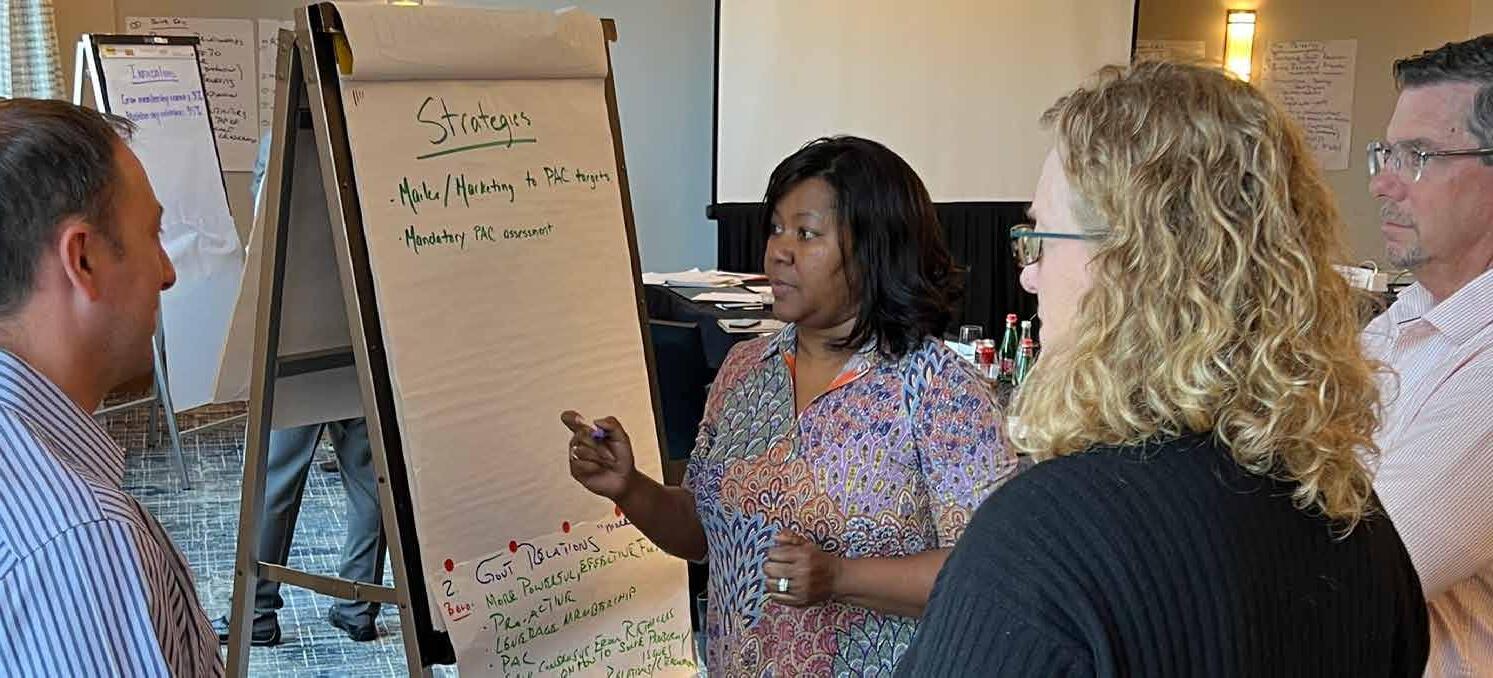
all things automation, after all—that are likely to be the priority as we face the problems of labor, scale, and ever-shifting consumer demand.
While the industry sets out towards new priorities, industry leaders also joined CGA to reimagine its strategic vision. Every few years, the Association reflects on its achievements and works to create a reinvigorated grand strategy. It was an energizing day, and I’m more confident than ever in the direction CGA is headed.
And so it’s been a summer of change and shifting priorities, which feels right. Before the busy season arrives, the shorter days, the holiday rush, and back-to-school, the
summer months always provide a nice reset. Our team has worked to carry this mentality into the pages that follow as we hope to point a way forward. We explore opportunities to automate various components of the industry, check in with experts on the implications of SB 1013, and celebrate this year’s Legends of the Industry scholarship recipient and her amazing story. And let’s not forget the very venue where many of you are settling into these pages: CGA Strategic Conference. I hope you take advantage of our signature event to build relationships, plot new strategies for your business, and shift your priorities as our conference theme suggests. ■
As the sun sets on summer, it’s time to get back to business.
CALIFORNIA GROCER | 5
Industry leaders at work during CGA Strategic Planning Session.
The Independent Grocer
Some say that the independent grocer is a dying breed, but the numbers tell a different story. In California alone there are thousands of family-owned businesses that are a vital part of their communities. Independent grocers offer a unique shopping experience that can’t be found anywhere else. They know their customers by name, and they are always willing to go the extra mile to help them find what they need. They also carry a wider variety of products that their communities want, including specialty items that you won’t find anywhere else.
Of course, independent grocers are not without their challenges. They don’t have the buying power of larger companies and their access to capital is more difficult. But they do have one major advantage: they know their local customers. They are committed to being friendly, fresh, and clean, and they are always looking for ways to improve.
If you visit the independent grocer in your neighborhood, you will find it’s always busy. The shelves are well-stocked with a wide variety of products, and the meat, produce, bakery, and deli are always fresh. The owner is friendly and knowledgeable and they always take the time to chat with you.
When you are shopping for some fresh vegetables for your meal, they will recommend a new variety of heirloom tomatoes that they just got in. They might give you a recipe for a tomato salad that you’ve never tried before. They have knowledgeable butchers in the store to help you pick just the right cut for your dinner. You will leave the store feeling happy and satisfied.
Independent grocers are more than just businesses, they are community centers. They provide a gathering place for neighbors, and they help to create a sense of place. They are a vital link to the past that helps preserve traditions and recipes that might otherwise be lost.
In a world that is increasingly homogenized, independent grocers are a reminder of the importance of individuality and local flavor. They are a precious resource, and we should do everything we can to support them.
The California Grocers Association (CGA) does a wonderful job representing the interests of the entire grocery industry in California and provides a variety of support services specific to independent grocers, including:
• Advocacy: CGA lobbies on behalf of all grocers in California and works with the independent grocers at the state and
local levels on topics that are specific to their needs. The association also works to educate policymakers about the importance of independent grocers to the state’s economy and to its communities.
• Education: Training and educational resources are available to independent grocers on a variety of topics, including food safety, compliance, and employee relations.
• Networking: Opportunities for independent grocers to network with each other and with other industry professionals abound. The association also hosts events and conferences that bring together independent grocers from across the state.
• Independent Operators Committee (IOC): CGA supports a committee within the organization that is just focused on the needs of the small Independent grocers.
2023 is another challenging year in the grocery business, but with hard work, commitment, and the support of CGA the independent grocer will continue to thrive and prosper. ■
CHAIR’S MESSAGE
Despite dire forecasts, California’s independent grocer continues to thrive thanks to its innate characteristics and the help of CGA.
| CALIFORNIA GROCER 6
DENNIS DARLING FOODS ETC.



















































































































































Size Matters
KEVIN COUPE FOUNDER MORNINGNEWSBEAT.COM
Why new trends in housing should give grocers food for thought
It was conventional thinking just a few years ago—you know, in the “Before Times”—that America was becoming more urban. Not that suburbs and rural America were going away, but that younger folks largely were interested in living in metropolitan areas that offered them different and more varied options than those to which their parents had access.
There were a lot of moving parts to this construct. Young people were getting married later in life, which meant that they were having fewer children. That meant they didn’t need houses the size of those their parents owned (and in which they grew up). Which led to them being able to live in smaller condos, co-ops and apartments, taking advantage of citified amenities. Their kitchens would be smaller and their basements non-existent, and they might not even own their own cars—these shifts would mean that some percentage of “big food shopping” trips would go away. All of which, the theory went, meant that food retailers might have to come up with different kinds of stores to address these shifts in behavior. The problem, of course, is that theoretical thinking only takes you so far, especially when it runs headlong into reality—in this case, a pandemic that affected how people felt about where they lived. Suddenly, when people were forced to spend more time at
home, larger houses and plenty of lawn became desirable. (Some cities also became more problematic for lots of reasons that I won’t belabor here.)
All of which meant that traditional supermarkets designed for big shopping trips got a lifeline.
While there are, of course, variations depending on geography and demography, there are certain rooms that are being axed from architectural plans. Like dining rooms, which just aren’t being used the way they used to be. (Also living rooms. And bathtubs.)
As these rooms are eliminated from floor plans, home designers are increasing the size of people’s kitchens (turning kitchen islands into the home’s only sit-down eating area) and “great rooms.” (I was curious, by the way, what the difference was between a “great room” and what used to be known as a “family room.” So I went online, and discovered that, in the words of one designer, “a family room is a casual space designed for the family who lives there,” while a “great room is all encompassing” and tends to bring the family room and kitchen together. What this really means, I think, is that architects and builders can charge more for a “great room.” But I digress.)
There was a piece in the Wall Street Journal about how homebuilders around the country, facing a reality in which both construction costs and mortgage rates are rising, have decided to shrink certain parts of the traditional home.
As transitory as trends can be, I do think this is a positive sign for food retailers. If consumers are moving away from formal dining and toward a more casual, hang-outin-the-kitchen approach, that can affect how they go to market, whether they’re buying prepared foods or items they can make from scratch, whether for a family meal or larger
However, the thing about trends is they are not static. And there have been a number of stories in the news lately that have got me thinking about the notions of size and utility and retail trends.
VIEWPOINT
| CALIFORNIA GROCER 8
get-togethers. (Does anyone host formal dinner parties anymore? I haven’t been invited to one for I don’t know how long, but maybe that’s just because people don’t like me.)
I feel a little ahead of the curve on this one. We’ve lived in the same house in the Connecticut suburbs for 39 years, and while we have a small dining room, we eat almost every meal in the kitchen. The best conversations, whether with family or friends, happen in the kitchen, in my view—there’s nothing like making a risotto or a nice bolognese while being surrounded by friends and family, with some folks drinking and others participating.

As food retailers look to compete with the restaurant industry, looking to hold onto market share advances made during their pandemic, they ought to be focusing relentlessly on the family kitchen. Attention should be paid not just to the products that retailers hope will populate a kitchen’s cabinets, refrigerator and freezer, but the degree to which these items enable familial— and familiar—exchanges. Marketing and merchandising programs should be built upon the foundations established by FMI’s Family Meals Movement, and Phil Lempert’s more recent Food Not Phones movement.
Part of a focus on the magic of the kitchen also should be a recognition that retailers should be putting more focus on fresh foods and prepared meals. There are a couple of reasons for this.
First, for the most part the center store, while undeniably important in terms of sales and profit, also happens to be the place where most retailers are vulnerable to competition—these aisles are where most stores carry the same items and compete over prices that may vary by only a few cents. The best place to compete, I would argue, are in the categories where retailers can really differentiate themselves. And that means fresh and prepared foods.
I also believe that automatic replenishment programs such as Amazon’s Subscribe and Save, which are now being adopted by other retailers using platforms like Replenium, will erode traditional center store sales by automating and digitizing these purchases. This will give retailers the space—both physical and psychological—to focus more on these differentiating categories. Which brings me back to where we started. Even if the urbanization of America isn’t taking place on schedule, it is important to remember that many of the people opting to stay in or move to the suburbs are still going
to be looking for the amenities that would have been available to them in the city. I know we’re seeing that in my community— there has been more mixed-use development taking place in the past two years than in the previous four decades, as developers scramble to offer different kinds of retail to a population getting younger, more diverse, and increasingly demanding.
Stores that opt to do business the way it always has been done are risking irrelevance. This isn’t just happening in the food business, by the way.
Macy’s continues to open a small stores that can go into locations previously unavailable to it, and has reported that those units are outperforming some of its traditional department stores.
And in San Francisco, as a number of retailers reduce their presence, IKEA has opened a new store that, while 85,000 square feet in size, is significantly smaller than its traditional blue boxes that were capable of blotting out the sun. This new location has an expanded food footprint, with both a deli and prepared foods, and is continuing the company’s new pattern of offering delivery and building services to customers who don’t want the traditional IKEA experience. (Tina Fey used to joke that “IKEA is where marriages go to die.” I’ve been married for 40+ years, and I think that one of the reasons is that we’ve assiduously avoided IKEA.)
And when you think about it, IKEA is perfectly positioned to take advantage of a housing trend that is shrinking certain rooms and expanding spaces thought of as being more utilitarian.
It makes sense for food retailers to start thinking the same way.
Size matters. But what matters even more is how retailers use their space to differentiate themselves and cater to the evolving needs of a changing shopper. ■
VIEWPOINT
CALIFORNIA GROCER | 9
iStock
INSIDE THE BELTWAY
Parents’ Shopping Behaviors Are Shifting Amid Back-to-School Season
JENNIFER HATCHER
CHIEF PUBLIC POLICY OFFICER & SENIOR VICE PRESIDENT, FOOD MARKETING INSTITUTE
latest FMI report contains surprising
The end of summer is often a stressful time for parents as they prepare to send their children back to school. Not only do they have to worry about purchasing clothes and school supplies, figure out schedules and transportation for after-school activities, and meet with new teachers to set up the school year for success—they also have to start shopping again for school snacks and preparing portable meals that are both healthful end enjoyable for their children.
With everything that parents must juggle at this time of year, it’s no wonder they are shopping in ways that are different from the rest of consumers. Last month, FMI— The Food Industry Association released our fourth installment in our five-part series exploring U.S. grocery shopper behaviors and attitudes. The most recent “Back to School” report reveals surprising ways in which parents are seeking and finding solutions to feed their families.
One of the more prominent trends we found is that busy parents are utilizing online grocery shopping at greater levels than the typical household to help manage their busy schedules, even as online shopping overall has leveled off since the height of the COVID-19 pandemic. Parents are increasingly leveraging the convenience of
online shopping options provided by their grocers, with 42% reporting a year-over-year increase in the frequency of their online grocery trips. In fact, parents are twice as likely to shop online for their groceries every single time than consumers as a whole, 24% to 12%. As retailers continue to adjust and improve their online shopping offerings, they should keep parents in mind and how online shopping can turn the weekly grocery trip from a chore to a joy by providing convenience, quality, experience and relevance—all part of today’s grocery shoppers’ value matrix.
More than any other group of shoppers, parents have also changed their food consumption behaviors. The report finds that 63% of parents are now eating at home, 59% cook/prepare their own meals and 45% bring food from home to work. Parents are looking for meal solutions and the food industry is perfectly positioned as a resource and ally. Retailers can position themselves for success with this cohort by offering ways for parents to create hybrid meals that combine scratch cooking with pre-made items. Cross-merchandising products to create meal solutions can make the path to purchase easier on parents when planning their meals for the week.
do more with less
Extreme weather leading to summer disruptions has also caused parents to alter their spending habits. Of those surveyed, 64% of parents report eating at home more than usual over the past few months. Parents were significantly more likely to stock up on grocery staples in anticipation of extreme weather than other shoppers. Similarly, parents were more likely to buy more bottled water and hydration drinks than their counterparts.
Thirty-three million households in America have children at home, demonstrating that parents are a sizeable and valuable segment of food retailers’ customer base—especially since they tend to purchase more during their weekly grocery trips than consumers as a whole. Retailers that emphasize making their lives easier through improved online shopping experiences, convenient meal solutions, and increased product offerings that parents tend to purchase will be better positioned to foster customer loyalty. ■
To download the U.S. Grocer Shopper Trends 2023 – Back to School report and to sign up to receive updates on future reports in the series, visit www.FMI.org/GroceryTrends.
The
ways parents
iStock | CALIFORNIA GROCER 10
fresh retail solutions

Find out more about our organic and conventional produce, plus our full floral program.

Consumers Deserve Hassle-Free Healthy Benefits at Any Grocer They Choose
Up at the checkstand, they unload their cart and the checker rings them up. Then they present a payment card that promised to cover their food purchases, but they’re told it’s not accepted at this store. Finding themselves unable to pay, they’re forced to abandon their cart and leave the store, embarrassed and uncertain as to how they’ll feed their family.
Scenarios like this are playing out at independent community grocers across the country for folks attempting to pay for their groceries with healthy benefit cards.
Funded by some insurance companies, healthy benefit cards were designed so customers—in particular, older adults, at-risk populations and those with chronic diseases—can fill up their carts at the grocery store with fruits, vegetables, and other healthy choices. These cards look like credit cards—some even carry a credit card company logo—but they don’t work that way. They’re only accepted by a few large grocery store chains.
So, millions of Americans who rely on independent grocers, often the only grocery stores in rural and urban
low-income areas, are locked out of using this benefit—folks who need it the most. And some independent grocers that support older adult communities—the primary participants in these programs— have experienced a double-digit drop in customers as they discover the limitations of these benefit cards that have cut them off from their traditional shopping option. Hearing from retailers about this issue, NGA took the lead earlier this year.
To apply additional pressure, NGA in May issued an open letter (https://www. nationalgrocers.org/healthy-benefit-cardopen-letter/), signed by nearly 1,700 independent grocers, to key healthy benefit card stakeholders, urging that the cards be accepted by a broader variety of retailers. In June, NGA hosted a meeting with POS system providers and payment networks to discuss solutions for providing access to healthy benefit cards in high-need communities being served by independent grocers.
Because of input from the June stakeholder meeting, NGA launched an online toolkit (https://www.nationalgrocers.org/healthybenefit-card/) to offer resources to help grocers implement the technology required to accept healthy benefit cards, as well as to be a comprehensive ongoing resource for updates about this program.
NGA also met with several members of Congress and the Centers for Medicare and Medicaid Services (CMS), urging them to provide oversight on Medicare Advantage plans.
This toolkit supports independent community grocers with the knowledge they need to navigate this emerging field and equips retailers with insights into key stakeholders in this evolving sector when initiating these payments in their stores.
Imagine for a moment that you see one of your neighbors shopping for groceries. Their cart is filled with all the products they need to prepare meals for their family during the coming week.
WASHINGTON REPORT
GREG FERRARA PRESIDENT AND CEO NATIONAL GROCERS ASSOCIATION
| CALIFORNIA GROCER 12
In February, NGA asked the White House to build upon their goals from the White House Conference on Hunger, Nutrition and Health to solve this problem.
The exclusion of independent grocers from healthy benefit programs widens the uneven playing field with dominant food retailers, and it means many customers are essentially prohibited from spending money in their own communities. The last thing anyone should be told is where they can and cannot shop for groceries.


Independent grocers—who play a vital role in fulfilling their communities’ nutritional needs and, in many regions, are the only convenient source of fresh food and other necessities—must have every tool at their disposal to ensure those most in need can feed themselves and their families. ■










WASHINGTON REPORT
CALIFORNIA GROCER | 13
iStock


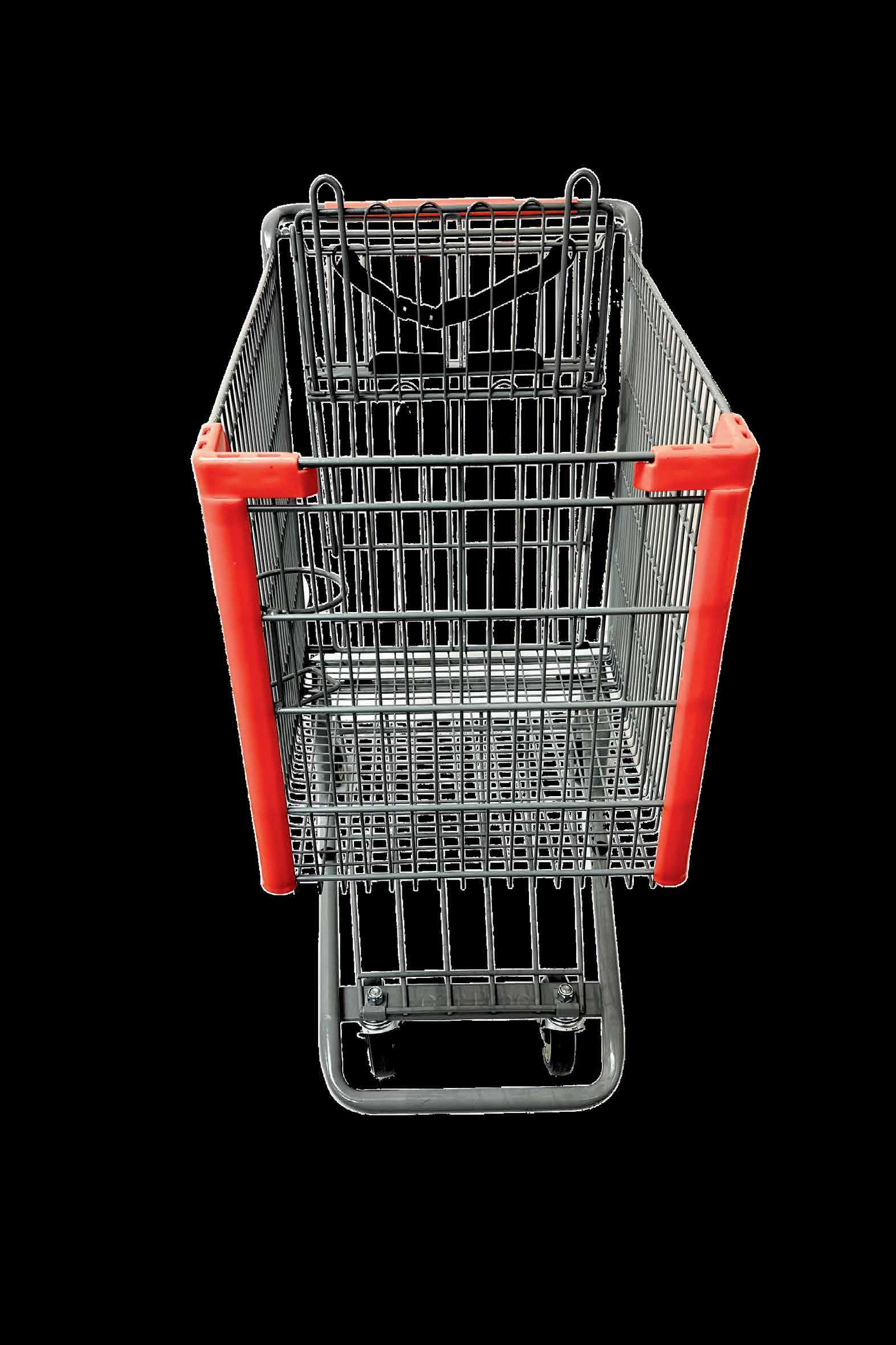
CART PROBLEMS? W E HAVE THE SOLUTIONS. Cart Retrieval Government ordinance compliance. Cart Repair Maintenance and repair on site. Cart Sales New custom cart sales with your branding. Cart Leasing Extra carts during the holiday peaks. info@retailms.net 818.817.6712 www.retailsolutionshq.com For More Information info@retailms.net
2023 has officially been a “Hot Labor Summer”
BROWN
Across the nation, temperatures have risen over cost-of-living, sick leave, hazard pay, artificial intelligence, and working conditions. Starbucks baristas and UPS drivers, domestic workers and Hollywood writers have all taken to the picket line against their employers. And solidarity strikes have made national headlines.
Professionals have pondered the pre-heating factors—positive signals from the state and federal administration, low unemployment, COVID hangover, increasing inflation, new labor leadership, and upcoming state and local elections.
But regardless of the impetus, “Big Labor” in California has decided it’s the right time to flex its muscle. The last few weeks of the legislative session served as a gauge of just how strong they are.
News stories of strike actions and contract negotiations have dominated the air waves. Municipal employee unions have been campaigning for higher pay, Hollywood writers and extras are fighting against AI, and state scientists are contemplating a walk.
According to Cornell University’s Labor Action Tracker, there have been 53 labor strikes in California so far this year, involving 276,340 participants. This figure doesn’t include strikes that began in 2022.
Meanwhile, this growing unrest has metastasized in the State Capitol. In the California Legislature this year, we’ve
seen legislation on workplace violence, expanding sick leave, unemployment insurance for workers on strike and franchisee responsibilities. Even legislative staff could be afforded the right to unionize in a bill this year.
And the grocery industry, unfortunately, has not been immune.
In the final days of the 2023 legislative session, two grocery-specific employment legislative measures are reaching a boiling point:
• AB 647, a bill by Assembly member Chris Holden (D-Pasadena), would expand California’s already pervasive Grocery Worker Retention Law (GWRL), a bill originally drafted by former Assembly member and current California Labor Federation chair, Lorena Gonzalez. The bill, which includes a private right of action, adds distribution centers in the GWRL and increases its application to any store that’s ceased operation in the last 17 months. The bill makes changes to preferential, or seniority hiring lists and adds a new term of art “separated employee” with associated employer obligations. A quick editorial note, the data from the State’s Economic Development Department shows that 0.001% of WARN Act notices issued have been for grocery store closures—raising the question: Is this bill really about protecting workers or is it about scoring political points?
• SB 777, a measure by Senator Ben Allen (D-Calabasas), would require, among other things, grocers to report costs of reusable grocery bag publicly. And how does that information improve recyclability rates? Good question, it won’t. But it would most certainly be of interest to its union supporters for collective bargaining negotiations. But the boldest play of all is the gut and amend by Senator Anthony Portantino (D-Long Beach) to provide employees on strike with unemployment benefits. Using the activity of this summer as the principle argument in support, the bill is definitely creating a division within the Capitol, even among democrats concerned about the growing UI debt that will be paid by private business.
While labor advocates don’t usually bring so many measures to one session, their expanded and diversified bill load this year is drawing attention from all. Moderate voices in both houses, a less than ideal budget and overextended asks may weigh against labor’s interests. And questions remain if they can keep the pressure up in the final weeks of the session or be at risk of pushing “Hot Labor Summer” into overheating. ■
Brown
LOUIE
IN THE SACRAMENTO OFFICE OF KAHN, SOARES AND CONWAY, LLP
CALIFORNIA GROCER | 15
CAPITOL INSIDER
The Past
IS BRINGING BIG CHANGES TO DEALERS
CRV CRV
by Louie Brown and Nate Rose
The Bottle Bill’s Past, Present, and Future
When the California State Legislature passed its landmark California Beverage Container Recycling and Litter Reduction Act in 1986, it was regarded as a case study for progressive environmental policy. For decades the system worked as intended, with the state’s total recycling rates surpassing 50% in 2012 and beverage containers leading the way. In fact, beverage container recycling rates climbed past 80%.
From the beginning, grocers were concerned by the idea of having to take beverage containers back in store, and this hesitancy gave birth to the idea for the convenience zones the state’s industry knows so well. In 2016, the recycling marketplace and convenience zone concept were upended. Minimum wage increased as state payouts declined. Scrap values plunged in line with oil commodity prices. Recyclers closed their doors up and down the state.
By 2018 writing in this very magazine’s pages, CGA wrote, “an outdated payment system for recyclers, lack of infrastructure for grocery stores, and mass closures of recycling centers have tarnished California’s once-hailed beverage container recycling program.”
The grocery community was left playing the role of recyclers-of-last-resort. It was a role the industry was never set up to serve, nor
was it fair that grocers should be the ones facing penalties for the collapse of a global marketplace. For years the Association pressured lawmakers in Sacramento to act, but few were up for a complete reimagining of the state’s recycling system until SB 1013.
SB 1013: The Present
Authored in 2022 by Senator Toni Atkins, SB 1013, imposed the most significant changes to California’s Beverage Container Recycling and Litter Reduction Act since
its inception. These changes impact all stakeholders, but none more than dealers— any retailer that sells a CRV product. This section highlights changes coming January 1, 2024, that CGA members should be prepared for during this transition period.
By far the biggest change established in SB 1013 is the addition of wine and spirits containers to the Bottle Bill program. Beginning January 1, the definition of “beverage” will include “distilled spirits, wine, or wine from which alcohol has been removed in whole or in part, whether or not sparkling or carbonated, regardless of the material type from which the container is made.”

This means on January 1, 2024, California Redemption Value (CRV) will be collected on wine and spirits at the same rate as other containers—five cents ($0.05) for a beverage container with a capacity of less than 24 fluid ounces and ten cents ($0.10) for a beverage container with a capacity of 24 fluid ounces or more. A beverage container that is a “box, bladder, or pouch, or similar container, containing wine or distilled spirits” will have a redemption value of twenty-five cents ($0.25).
However, these containers, regardless of volume, are not likely to be marked with “CRV” on labels as the law doesn’t require
1, 2024
January
iStock | CALIFORNIA GROCER 16
labeling by bottlers until July 1, 2025. Therefore, it is imperative for dealers to talk with suppliers prior to January 1st and update POS systems to comply with the transition.
The final piece of SB 1013 impacting dealers is the development of the Dealer Cooperative, which will allow industry the opportunity to develop plans and partnerships for unserved zones to provide and expand convenient recycling opportunities for consumers and minimize impacts on dealers.
When it becomes effective on January 1, 2025, dealers will no longer have the option to pay the $100 per day of in lieu fees. Rather, dealers in unserved zones must either join a dealer cooperative or redeem in-store. Finally, in this year’s legislative session, SB 353 (Dodd) proposes to include “any size container of 100% fruit and any size container of vegetable juice” in the program as well beginning January 1, 2024.
Manufacturers of these products will have until July 1, 2024, to have compliant labels. Dealers have the responsibility to include CRV in all advertising and shelf tags for beverages in the program. To ease that transition, CGA has negotiated amendments for SB 353 to delay the shelf tag requirement for new containers until January 15, 2024. We expect the bill to be signed into law and will provide that information to our members when it happens.
The Future
CGA is actively engaged in this process and will continue to provide updates as regulations are adopted and implementation
proceeds forward. The Association believes CalRecycle is working to be amendable to grocers, and thus far, all major stakeholders have fostered productive working relationships.
“When the dealer cooperative concept was born, many assumed the co-ops would operate similar to certified recyclers, but it’s clear now they’re creating a separate category with different rules,” says RMS CEO Matthew Dodson, who is a stakeholder in the process and is engaged in building potential dealer cooperative solutions for California’s grocery community.
Recently, CalRecycle hosted a webinar and informational session to further expand what is known about how dealer cooperatives will function. Grocers in unserved zones can join a cooperative or participate in in-store takeback; however, Dodson believes the latest draft regulations from CalRecycle make the in-store takeback process exceedingly difficult in terms of compliance.
“I think they’re nudging dealers towards cooperatives,” Dodson said. “The potential amounts of paperwork and reporting requirements make in-store takeback a real challenge.”
To create dealer cooperatives, those running said co-ops will need to create stewardship plans for how they will function, identify geographic ranges to operate within, and even create non-profit charters. Currently, RMS, CalRecycle, and various recycling technology companies are conducting experimental programs to figure out what works and has the potential to scale by January 2025.
“Our goal is to satisfy CalRecycle and legislative requirements,” says the RMS CEO. “For us to do our share to bring back redemption to a higher level, keep costs low, be efficient, and we want to help grocers maintain their sustainability goals as well.”
A switch flips January 1, 2025 when dealer cooperatives are then allowed to start operation, but there’s a long and arduous regulatory process involved and rules to be finalized ahead of co-ops becoming a solid option for dealers. It’s likely dealer cooperatives will need to be scaled over multiple years to cover the entire state. There is also additional legislative clean-up to come.
For example, stakeholders are hoping for legislative fixes to how recyclers and cooperatives are paid out as the current rules pay by weight and new technologies are making beverage containers lighter in many cases. Still, Dodson is positive about the long-term potential of dealer cooperatives to absolve grocers from being recyclers-of-lastresort again.
“This dealer cooperative, if we work together as an industry to take on this burden, the cost per location is going to be relatively low. That dealer cooperative will carry most of the load with minimal impact on store operations. Grocers can continue selling groceries and not be focused on processing they aren’t built to do”.
For now, the advice is to hold tight. There are no easy solutions, and the regulatory process is still underway. In the meantime, CGA will keep you updated as new information becomes available. ■
CALIFORNIA GROCER | 17
California’s recycling system is undergoing its most significant changes in decades
supemarkets How

iStock
will get supercharged
By Matt Pressberg
The supermarket business is not typically thought of as representing the vanguard of technology. But as today’s labor shortage shows no sign of abating anytime soon—especially in California—grocers are increasingly looking at robots, shuttles, and software to make customers happy.
With California losing population, immigration down, and birthrates continuing to decline, there are simply fewer employees available for grocery jobs. In fact, in private conversations, some grocery executives have suggested that labor availability is delaying store openings—and even preventing some altogether.
In the company’s most recent earnings call in early August, Sprouts Farmers Market Inc. Chief Financial Officer Chip Molloy spoke about “offsetting those [labor cost] increases with new processes and technologies while enhancing the customer experience.” That’s what other grocers, from California to New England and as far as Finland and Singapore, are looking to do as well. Grocers have increasingly embraced technology that goes well beyond selfcheckout, touchless payments and even aisle monitoring robots, introducing solutions
like automated picking robots that can handle labor-intensive tasks like break-pack and shuttles that deliver goods directly from warehouse aisles to delivery workers, as they work to give customers the variety and convenience they have come to expect under the constraints of today’s economic realities. What they have realized is that it is impossible to keep prices down with labor availability in short supply while delivering what customers want, without offloading some of that work to software and computers.
“Grocery is an extremely tough business to be in,” said Himanshu Ashar, Senior Product Manager at RightHand Robotics, a Massachusetts-based company that develops intelligent piece-picking robots. “What also complicates the operations is the seasonal nature of produce, with customers always expecting more with less. The only way to deliver customer satisfaction is to optimize your back operations.”
GOING DIGITAL
Danielle Dakin, Market Development Director at Dematic, which designs and builds customized automation solutions for a variety of industries, said a good initial
exercise for grocers interested in making a major investment in technology is to start by defining exactly how they want to serve their customers. That includes specific services and lead times, physical channels and other infrastructure they intend customers to use and interact with. They also need to be mindful of the size of their physical distribution networks and their particular constraints to avoid writing checks technology alone can’t cash.
Ashar said moving from paper manifests to a software-based warehouse management system tends to be the first step for any grocer “going digital.” This allows that information to flow seamlessly to human pickers with handheld devices or even autonomous robots, who can batch pick multiple orders that are later separated downstream. Installing a system like this would cost at least $2 million, according to Ashar, but immediately and substantially accelerates order fulfillment.
“The challenge is ‘old-school’ grocery companies have to update their warehouse model,” said Ashar. “They have traditionally operated as distribution centers, replenishing inventory by the case, or mixed-SKU tote, to brick-and-mortar stores where their customers handle the fulfillment and last mile.”
Continued on page 20 ▶
CALIFORNIA GROCER | 19
The next layer of technology for many grocers would be to install an automated storage and retrieval system (AS/RS) at their warehouses, which reduces the need for picking, storing, assembling packages and replenishing inventory, and improves labor efficiency and operational costs. Not only do systems like this allow for products to be sorted vertically, saving real estate, but Dematic’s Dakin added that they tend to reduce energy costs, which is a significant expense in California. Of course, all of these systems should be tied into the same software, providing easy visibility on products that often have a short shelf life.
“Software should be involved at every stage of the grocery process: from warehouse execution to asset management to click and collect,” said Dakin. “Doing so ensures all your systems are successfully integrated, allowing you to obtain valuable information to help you continue making informed decisions.”
Each incremental step in this automation process is increasingly capital intensive, Ashar said, but it pays bigger dividends in better facilitating order fulfillment workflows, and getting the right products on shelves for customers.
LABOR CHALLENGES
The single biggest issue facing grocers in California right now is the cost and availability of labor. In a business that has historically sold food at single-digit margins, there’s simply no room to accommodate a surge in labor costs without passing them on to consumers, who are already paying high prices for raw ingredients. In addition, many customers now expect service-intensive offerings, such as curbside pickup, home delivery and easy returns—all while giants like Amazon and Walmart are competing in the same space.
“With the increased preference for hybrid shopping, businesses continually need to adapt for faster fulfillment of online orders, modernized in-store grocery experiences, and new consumer shopping preferences on the horizon,” said Dakin.
For example, one product that helps optimize this faster fulfillment is Dematic’s Voice Directed Picking System, in which supervisors can call out items and directions to a team of human pickers, who can pack online orders much more efficiently without having to look down at handheld devices. Beyond that, there are fully automated technological solutions like RightHand Robotics’ RightPick system, which allows grocery stores to let their scarce labor concentrate on more important things.
“The RightPick system is modular and scalable, and enables grocers to increase the number of shifts, to reduce labor turnover costs, and to refocus their manual workforce away from dull, repetitive, and unsafe tasks,” Ashar said.
Two companies in high-labor-cost markets abroad also provide examples of innovative uses of technology that have increased productivity without requiring more manpower. RedMart is a leading online grocery business in Singapore, which recently introduced a shuttle-based storage and retrieval system from Dematic to enable rapid good-to-person picking, bringing items directly to workers. This one change improved productivity by five times versus manual picking, Dakin said.
Finland’s second-largest grocer, Kesko, recently installed Dematic’s AutoStore software to pick online orders, which boomed during the pandemic. Kesko’s AutoStore-enabled micro-fulfillment centers were physically attached to the stores and fully integrated with them, allowing the software to combine AutoStore picks from the warehouse with delicate items chosen directly from the shop floor. This provided the kind of seamless, quick and neighborhood-based fulfillment people want from their grocery store.
◀ Continued from page 19 iStock
| CALIFORNIA GROCER 20
Software should be involved at every stage of the grocery process: from warehouse execution, to asset management, to click and collect.
Grocers not only have to deal with labor challenges affecting their “traditional” jobs, but the advent of home delivery during COVID—and customers’ affinity for it—has added another labor-intensive service that many feel obligated to provide. Ashar said that’s been a major factor in grocers looking to invest in systems like RightPick.
“When it comes to grocery home delivery, the shelf life of the products involved and the customer expectations of just-in-time delivery has necessitated grocers to look toward technology to solve their customer experience challenges,” he said.
DOING MORE WITH LESS
Consumers like choice, and choice requires space. In California, finding the right space near customers can get very expensive. That especially impacts larger supermarkets and warehouses, which either have to be located much further from customers, increasing transport costs, or do more with less space. For example, AS/RS systems allow for vertically stacked warehouses, freeing up floor space for more inventory or other, higher-priority uses.
“A highly automated order fulfillment warehouse requires fewer parking spaces, lower operational footprint, and higher throughput even with fewer workers,” said Ashar.
Systems like RightPick, which has the smallest footprint for piece-picking robots, can be efficiently deployed in less spacious warehouses. Ashar said it effectively gives growing companies, who are at capacity in meeting their current demand, a choice to optimize the current warehouse rather than being forced to buy or build a new one. In many of these cases, investing in technology makes the most financial sense.
“The investment in automating existing warehouses using AMRs, conveyors, AS/RSs, and robotic piece-picking allows them to gradually improve the average orders shipped per day while holding off on expanding their real-estate footprint, which is significantly capital intensive and comes with a much longer timeframe,” Ashar said.
Associated Grocers of New England (AGNE) operates the largest retailer-owned, wholesale grocery distribution center in New England—a place not known for wide open spaces. The company was dealing with an issue facing many grocers: more and more SKUs demanded by customers and limited space to meet their needs.
AGNE worked with Dematic to build a custom solution combining Dematic’s Multishuttle automated inventory system with its goods-to-person order fulfillment system, which allowed for the processing of more inventory in less space. The compact footprint of the new system and its underlying technology also now allow for scalability where it really did not exist before, Dakin said.
STAYING FRESH
One thing grocery companies like Tesco learned the hard way is that Americans like to choose their own fresh produce. To do so, we use a highly scientific evaluation process consisting of the eye test, the smell test, and the firmness test. As grocery store inventory management is increasingly automated, it seems like we should have better, more advanced ways to ensure we are buying the freshest raw ingredients.
“If we can track our pizza delivery, we should be able to track the journey of our produce to market,” said Dakin. “Consumers want to know where their goods come from, so having the ability to track and trace an item throughout the supply chain is key. This is especially true since farm produce can come from all over the world. By making it more trackable, this provides grocers with more control over their supply chain, and now, they can more easily offer fresher produce and proteins once ready for consumption.”
Dakin said that using an automated inventory system is the best way to get the precise information needed to work reliably with perishable goods. The challenge is that some of these raw ingredients come from lowertech sources, so trustworthy data from the point of origin is key.
“Food traceability is only as good as the data provided, so it’s important to set up trackand-trace goals on the front end so that you can provide the answers to the questions your shoppers will be asking,” said Dakin. Robots can do a lot, but for now, these fresh items like proteins and produce are still best handled manually to get to the end user. The RightPick system has a proprietary gripper that uses suction and three fingers to handle a wide range of items and transfer them from point to point. Although the company is currently focusing on increasing RightPick’s “range” and allowing it to more confidently pick and pack more fragile goods, Ashar acknowledges it’s currently better equipped for products that need a little less care, like shampoo, canned foods and other “center aisle” items. Even as grocers embrace their technological revolution, there are some jobs that still require a little more of a human touch. ■
CALIFORNIA GROCER | 21
The single biggest issue facing grocers in California right now is the cost and availability of labor.
CGA & California Lottery® — A Winning Partnership






California Lottery products can be the ultimate asset to your store’s growth. Lottery games earn up to 6% on every $1 sold and bring in a steady stream of loyal players, while also helping to benefit California public schools. California Lottery is ready to help bring that winning feeling to your customers every time they visit!



Learn more at calottery.com/become-a-retailer.

© 2023 California Lottery®
The FPFC Apprentice Program was designed to provide a complete overview of the supply chain and professional skills and networking opportunities to professionals looking to increase their knowledge of the industry and develop the skills and understanding to take on leadership roles. Each Apprentice is assigned an industry mentor to facilitate introductions at networking events and provide guidance and feedback during the program

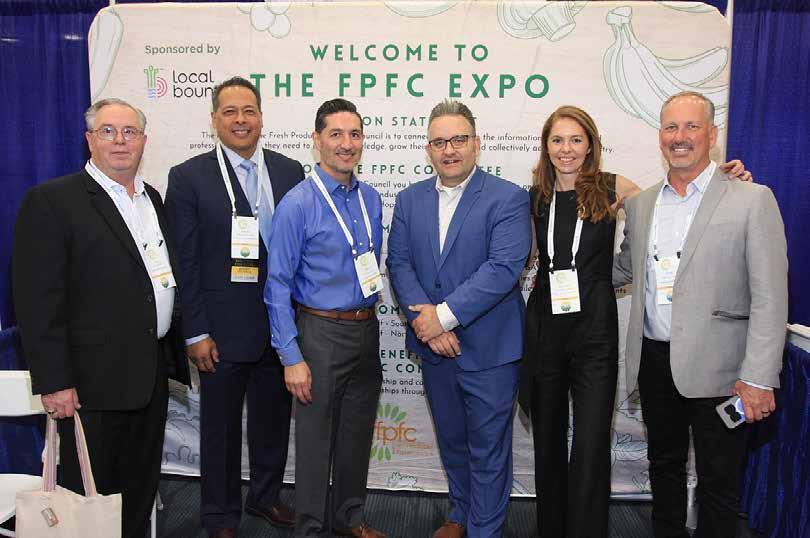
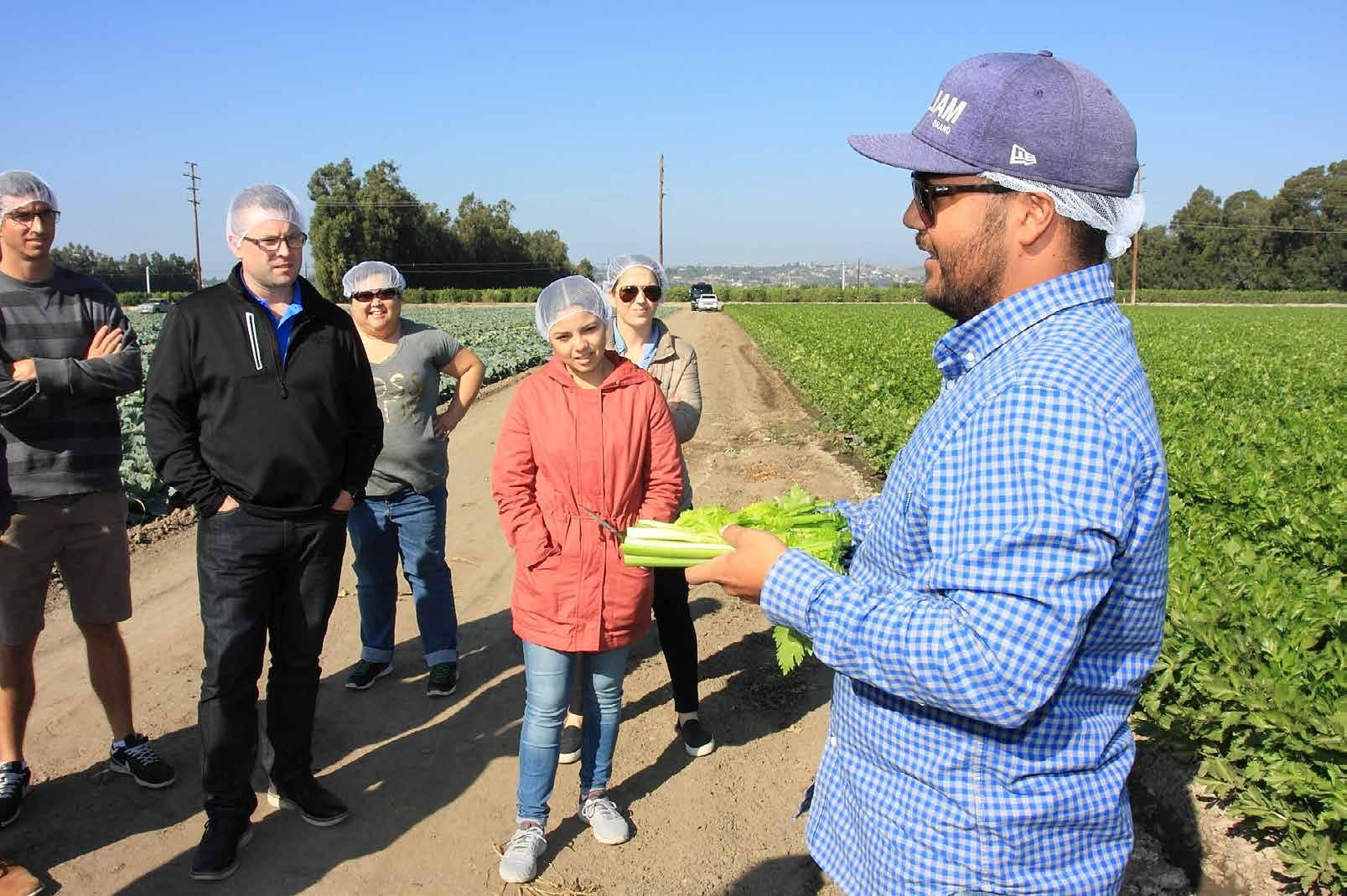
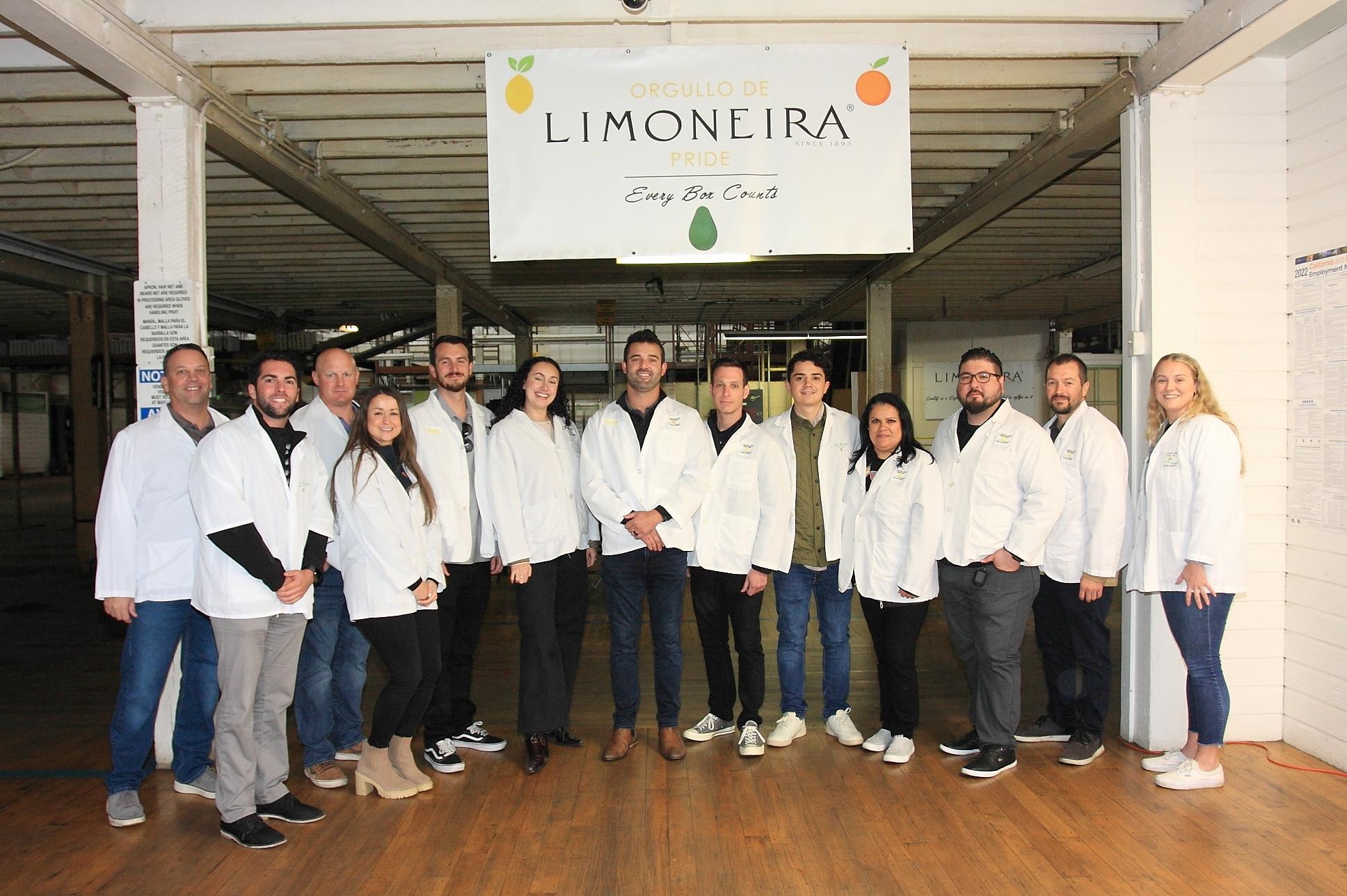
Applications open January 2024 714.739.0177 info@FPFC org www.FPFC.org Save the date for the Annual FPFC Expo at the Anaheim Convention Center on Wednesday, May 1st, 2024.
Apprentice Program is for ALL industry professionals! Save the Date Applications Open in January 2024! Apprentice Program 2024 FPFC Expo May 1st, 2024 Anaheim, CA
FPFC
AMERICA’S #1 VALUE BRAND*



*Amongst National Brands



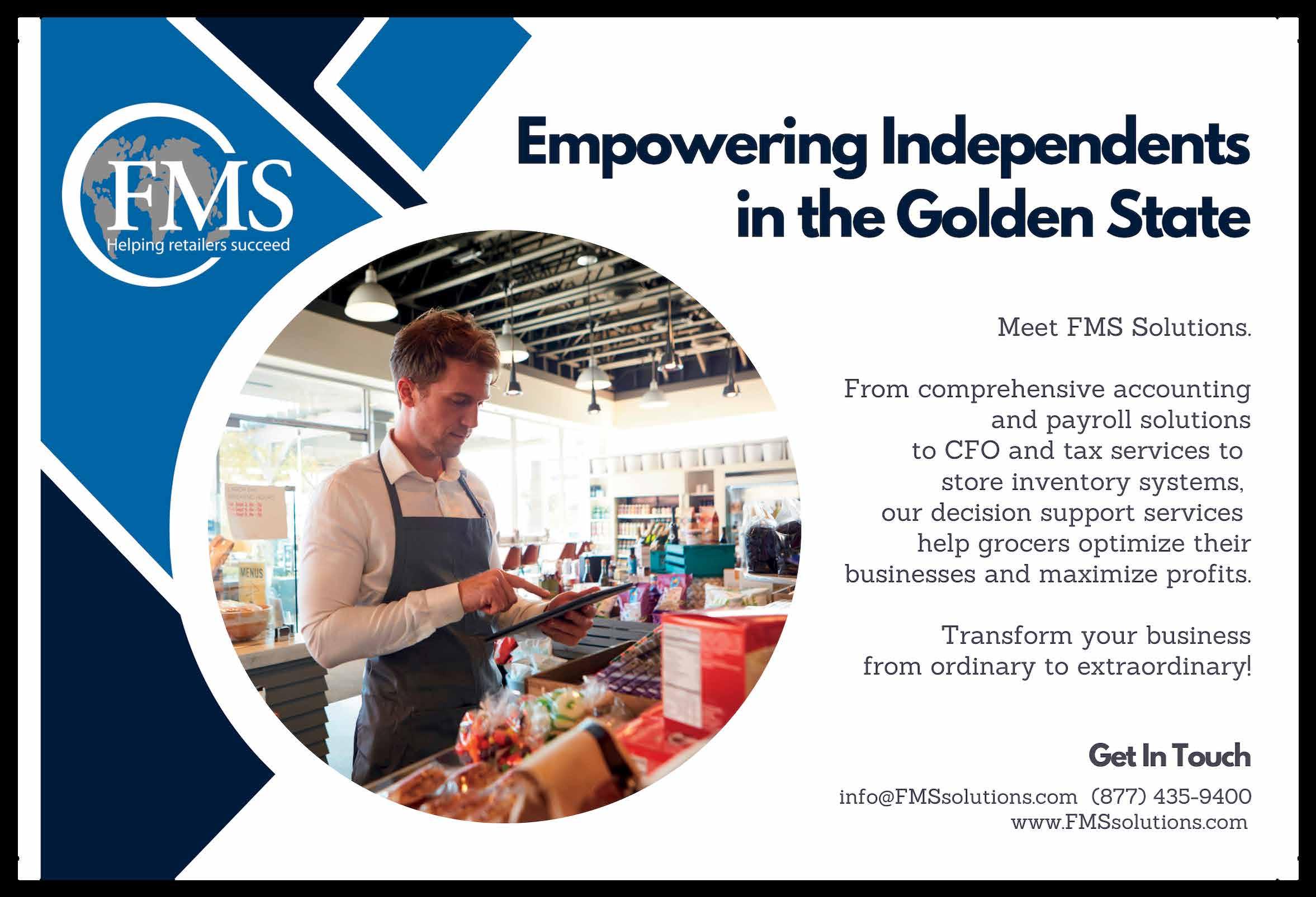
| CALIFORNIA GROCER 24
RON FONG Congratulations



15 YEARS OF SERVICE AND DEDICATION TO CGA AND THE GROCERY INDUSTRY


FOOD STORES




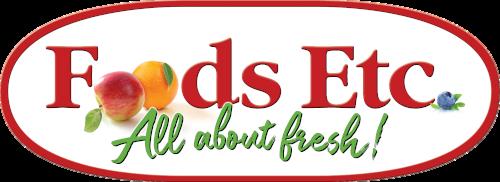

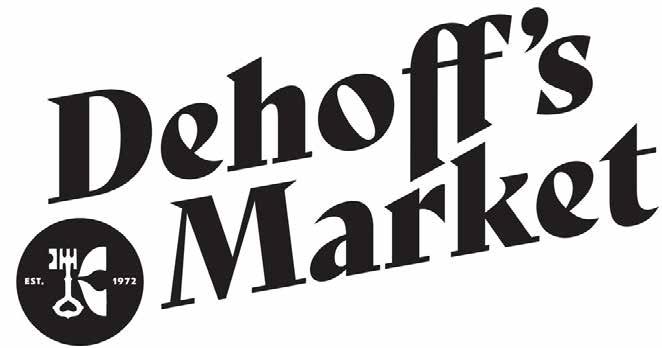

Shifting Your Priorities Towards the Empathy Reward
HOW TO UTILIZE EMPATHY TO IMPROVE YOUR ENTERPRISE RISK PROTECTION PROCESSES
 By Christopher P. Norris, CFI, Director WZ EMEA & International Training, and Webinar Training
By Christopher P. Norris, CFI, Director WZ EMEA & International Training, and Webinar Training
iStock
| CALIFORNIA GROCER 26
The ability to prioritize needs and effectively communicate as a leader within your organization will have a direct impact on your success as well as your store’s success within the community. Communicating both internally and with your customer base through a variety of situations and tasks can prove to be challenging. Sometimes those challenges mean you may have to shift your priorities and communication style to meet the needs of the situation at hand.
During the recent CGA and CGA Educational Foundation Store Leader Seminars we discussed the importance of communicating through conflict and applying de-escalation tactics as a form of effective communication. The deescalation communication tactics we discussed included items like utilizing adaptive communication styles, coming from an adult-ego space, and the importance of projecting empathy. Whether you are encountering conflict or resolving issues in the workplace our priorities far too often center around simply addressing the issue and seeking a quick resolution. In this article we’ll discuss the importance of shifting our priorities to recognizing the individual themselves and approaching these issues with compassion and empathy when addressing challenging conversations in the workplace, including integrity issues.

Personal and professional growth and development are necessary for even the most experienced manager and loss prevention professional. Time continues to roll on and as it does people, places, and things evolve and change. Through this inevitable evolutionary process, its important to recognize the need to reframe and update oneself periodically including various tactics and techniques to help increase productivity. One of the best ways to successfully accomplish these updates is to remain current with analytics, current data and research.
Research in the world of communication and investigative interviewing helps to add a greater understanding and clarity to the most effective strategies to form an ethical approach to a difficult conversation. Truth-seeking when addressing integrity issues with an employee can be a difficult task. Understanding some updates and changes can help to overcome some of the difficult challenges associated with these conversations. One of the keys is understanding the value of the empathetic approach during the interview process.
Take a moment to think about a time when you did something wrong. Do you remember the person who confronted you about it? Did you tell them the truth? How did you decide what information to share? Compassion and empathy can be an important component to assist people when they decide to tell the truth.
The dictionary defines compassion as, “a feeling of deep empathy for another’s suffering or misfortune.” But what exactly is empathy? The dictionary defines empathy as, “the ability to understand and share the feelings of another.” How can a manager or an interviewer apply this definition of empathy to your conversations? Understanding this basic principle of compassion and the ability to show empathy can help an interviewer provide a clear path to the truth from your subject; the empathy reward! Let’s take a look at how this works and how you can obtain accurate information, cooperation and the truth. There are a variety of different reasons why your subject might want to cooperate with your requests and tell the truth regarding their involvement in an issue under investigation. They include the fact that they believe they have been caught. Maybe they can relieve feelings of guilt or responsibility.
Continued on page 28 ▶
CALIFORNIA GROCER | 27
iStock
Or quite possibly they can offer explanations allowing them to save face and put their spin on the event. Managers and loss prevention professionals are tasked to wear many hats and cover a great deal of responsibilities. To me, at times the most rewarding part of being a leader occurs at the conclusion of the investigation when you interview the dishonest employee.
you should fashion an interview approach which infuses empathy to help the individual get to grips with the consequences of their illicit actions.

Some think this means being a good actor in the interview room. It can be tempting to put on a false mask of compassion or use an authoritarian aggressive approach by speaking in a condescending tone.
emotionally so they can decrease their internal feelings of guilt. You should spend time evaluating the individual’s verbal and non-verbal behavior and should not forget your subject is interpreting your behavior to assess your trustworthiness. The empathetic demeanor of the interviewer is important because it compliments the powerful structure of the WZ Method’s NonConfrontational Approach and Introductory Statement. A key component of this method is showing understanding with your subject, and you accomplish this through empathetic stories and statements.
Expressing interest in your subject is part of the empathetic process which most of you would recognize as establishing rapport. The early stage of an interview with a dishonest employee begins by finding some common experience or interest to initiate the relationship with the individual. The initial rapport is more of a social obligation each party has after first meeting, but it lacks the more open sincerity of a long-termrelationship. Expressing interest opens both parties to explore common experiences and creates a curiosity to engage the subject more fully.
Understanding why people might confess to wrongdoing is important in designing an effective approach. You get the opportunity to sit down with the employee, but one thing you must remember is they are real people facing real challenges and an uncertain future. An interviewer who exhibits empathy can touch the individual’s true feelings of guilt which were buried deep inside. The interviewer’s empathy extends into the very structure of the interview itself. Beyond basic principles of following the Golden Rule and treating others as you would like to be treated, or even the Platinum Rule of treating others the way they want to be treated,
This does not touch the individual’s feelings of guilt or allow the person to preserve their self-image. What it does is create an adversarial environment counterproductive to the entire process.
Interviewers can show empathy non-v erbally by displaying a calm demeanor, open posture, empathetic eye contact, and tone of voice. During this difficult time it is important the individual be supported
The three parts of the WZ Method’s Introductory Statement combine to convince the individual that their guilt is known. It is designed to do so in a gentle fashion slowly using curiosity to buy time as the words build an awareness of their situation. The indirectness of this approach softens the impact psychologically on the individual allowing the interviewer to maintain rapport and smoothly move into expressing empathy and sharing empathetic stories.
◀ Continued from page 27
iStock | CALIFORNIA GROCER 28
Interviewers can show empathy non-verbally by displaying a calm demeanor, open posture, empathetic eye contact, and tone of voice.
While the individual gets to grips with the fact that their dishonest activities have been discovered, the interviewer attempts to soften the shock by shifting to an expression of understanding. Showing empathy at this point is critical to begin allowing the individual to save face and relieve guilt. In some cases the person may appear panicked, wearing a hunted expression of fear matching their underlying uncertainty of the situation.
To help the individual find their way, the interviewer takes the lead offering a summary of justifications to the motive to help reframe the person’s true motives into more socially acceptable reasons for their dishonest actions. Expressing these understandable reasons helps the person to begin moving toward a resolution of their current situation. The interviewer’s compassionate offer of empathetic statements helps the panicked mind of the person begin to organize their confused thoughts.
Some interviewers fail to take the step of offering empathy to help the person find their way, and instead ram directly into the dishonest activity, leaving the individual emotionally wounded. The truly empathetic interviewer helps soften these emotional bumps to encourage the individual to purge themselves of their guilt. A quick summary and empathetic approach provides the first step in the face saving process at a point where the subject feels that perhaps they are the victim. Showing understanding, the interviewer offers empathetic statements
in the form of short stories to assist the associate in presenting an honest response. The structure of each story is crucial to conveying an empathetic message. These empathy statements are further softened for the person when the interviewer relates them in the third person so the subject does not have to reject the premise because it is too personal. But this also does something much more powerful; it shows the person they are not alone, others have similar problems. By telling the story in the third person you allow your subject to identify with the main character of the story. This emotional bond with the individual in the story removes feelings of alienation and begins the process of transferring blame and relieving guilt. When an interviewer expresses understanding of a person’s life challenges, it removes the individual’s feeling of being judged. The empathetic approach by the interviewer is suggesting that you deal with good people who have made poor decisions. People generally do not do things they cannot rationalize, so the empathy statements provided by the interviewer supports the positive view people have of themselves. The interviewer must now deal with the person’s feeling of being victimized. Regardless of what the individual has done, they visualize themself as the victim in this encounter. The empathetic interviewer offers a more compassionate view of the situation, reframing it so the individual has the sense of power of choice and that
their actions can affect perceptions of the situation. This is done by allowing the person to view another’s actions with the subject as the decision maker. By understanding the subject’s situation, the interviewer moves them into a more rational frame of mind to look at an incident though the eyes of a decision maker.
This empathetic approach presented by the interviewer assists the individual in making decisions about their first truthful statement related to their wrongdoing. To assist the employee, the interviewer must deal with the final internal conflicts and suspicions the individual may possess. As the interviewer handles these final barriers it is important to recognize the appropriate time to ask a strategic assessment question about their involvement into the issue under investigation.
Too often we hear stories from the field involving interviewers still applying scare tactics and intimidation that Hollywood feeds you on a regular basis. As an interviewer, you need the ability to show empathy to employees who have made poor decisions. This shift in your approach and priorities may just help them through a difficult time in their lives.
Take a moment to reflect. Does your leadership style, communication tactics, and interview delivery reflect a sense of compassion and show empathy? You must shift your priorities and recognize the human side of each individual you address, interview, and interact with as a manager. Doing so will help you select an approach which treats the person with respect and a sense of compassion. Combine that with a genuine, sincere delivery and you can achieve success and a clear empathy reward. ■

iStock CALIFORNIA GROCER | 29
Take a moment to reflect. Does your leadership style, communication tactics and interview delivery reflect a sense of compassion and show empathy?
Congratulations to Our Scholars




Rebeca Ramos Carlos Palacios Maria Hilda Viernes Jesus Colin









Joaquin Hernandez

Michelle Sosa Mariana Moreno
Cynthia Jimenez-Romo Melissa Torres Valeria Vilchez Zina Balmaceda




| CALIFORNIA GROCER 30
©2023
BEVERAGE CO. *MOLSONCOORSBLOG.COM
MOLSON COORS QUARTER EVER *!
MOLSON COORS
CHEERS TO THE BEST
Serving Up the Freshest Eggs for Generations.

Family Farms Producing California’s Freshest Eggs.

Our local California Family Farms have been providing farm fresh eggs daily to your stores. In addition to producing fresh, nutritious, high-quality eggs, we take pride in the traditions and values of being good stewards of the land, providing superior care for our hens and giving back to the communities that support us.

 NuCal Foods
NuCal Foods
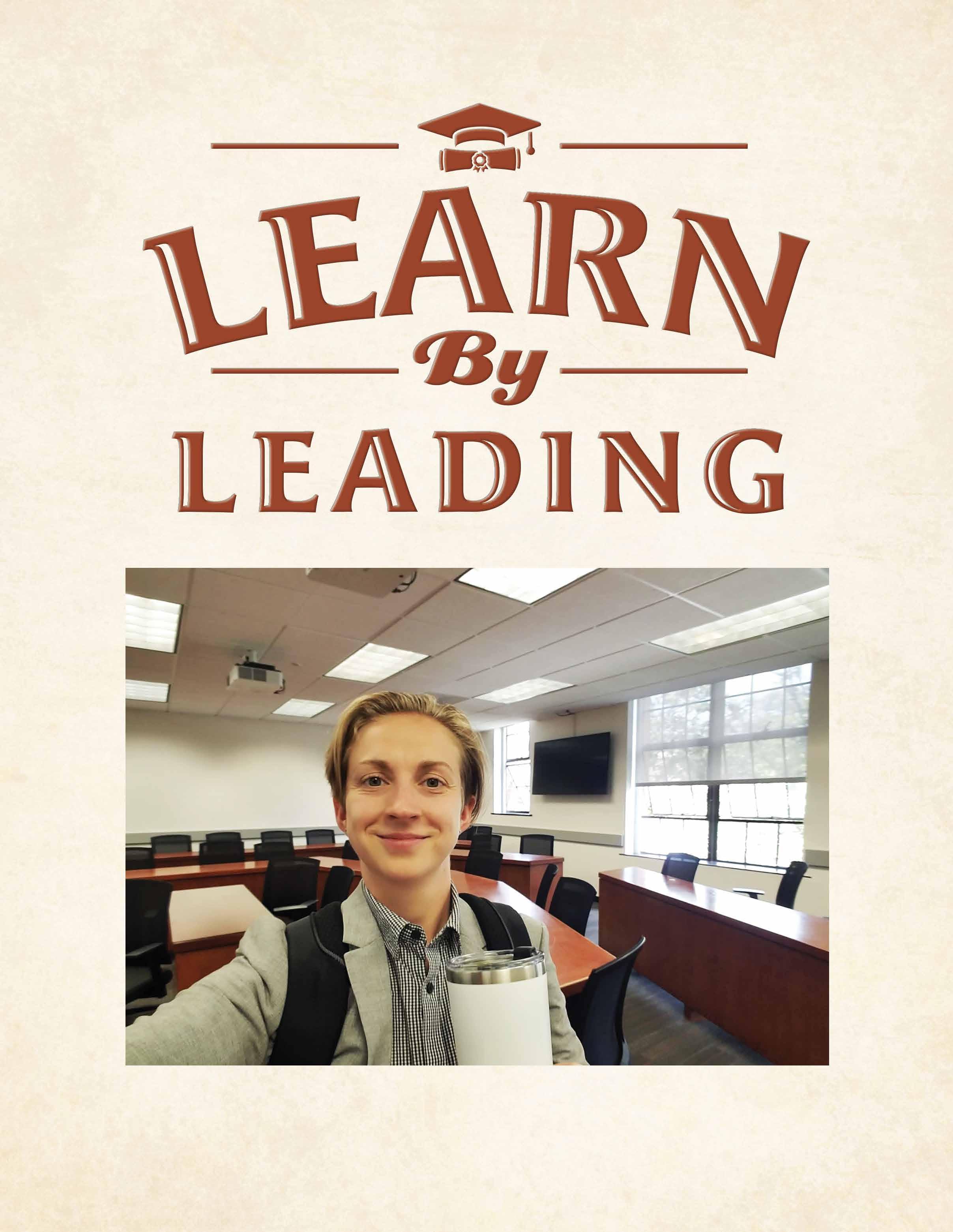
| CALIFORNIA GROCER 32
ow a seasoned leader, Rosita oversees more than 2,000 employees as District Manager for SoCal Division Albertsons Companies.
Over the past 13 years in the industry, Rosita has experienced rapid growth and has worked her way up through more than 10 role changes and promotions. She did not start out with a proclivity for leadership, though. Until this point, her career has been fueled by a combination of her own natural drive, learning on the fly, and transformative mentorship.
“It started with my mentor. She really believed in me and took the time to help develop me.”
Kimberly’s mentorship came at a crucial time for Rosita, who was emerging from a tumultuous chapter in her personal life when they met.
“Prior to coming to work with the company [Albertsons], I was struggling with drug addiction, I was homeless, and I didn’t have a good relationship with my parents. Kimberly took me under her wing, I was yearning for that motherly love.
By Grace Becker
Because she was so highly invested in me, I became in love with my job.”
A few years after moving from Poland to the Unites States at age eight, Rosita’s parents divorced which sparked teenage rebellion and time spent hanging out with the wrong crowd. Emerging from this phase around age 20, Rosita started working at a Northern California Safeway store as a deli clerk, which is where Kimberly came into her life.
“My store manager really saw something in me, and she became my mentor. Within four months I was promoted from a deli clerk to a deli manager. I had zero experience in the grocery business. I had zero experience being a leader or manager. All of a sudden, I was leading 21 employees.”
Though she hadn’t had prior leadership experience outside of playing forward position on her soccer team, Rosita was up to the task and threw herself into leadership education.
“I never thought of myself as a leader growing up,” she said. When she was promoted, something clicked. “I just fell in love with the business and with leading people. I became obsessed with personal development and professional development. I started reading leadership books and attending personal development seminars that my mentor showed me.”
The hunger and dedication that Kimberly saw in Rosita only grew from there. Each night before bed and in the morning when she woke up, Rosita would read a four-page leadership competency packet provided by Albertsons. She can still recite it to this day.
This first promotion kicked off the momentum for Rosita’s impressive career growth, which hasn’t stopped since. Rosita quickly moved on from her deli and bakery manager role to perishables manager, and then assistant store manager under Kimberly’s wing. Then came a major change when Kimberly transferred to the Southern California Albertsons Division. After a few months, Rosita followed.
“I left everything behind in NorCal and moved to the Southern California division,” she said. “I slept on her [Kimberly’s] couch for about four months, and then I became her assistant store director at Vons.”
The promotions continued and Rosita bounced from relief store director to store director. After a short-lived four-month stint at Target, Rosita returned to Albertsons Companies as a store director at Pavillions, and soon after was promoted to a district customer service and front-end operations manager, overseeing 41 stores and learning the behind scenes of the business.
N
Continued on page 34 ▶
CALIFORNIA GROCER | 33
Sometimes it takes someone else to realize your untapped potential. For Rosita Szatkowska, the 2023–24 CGA Educational Foundation $10,000 Legends of the Industry Scholarship recipient, that person was Kimberly Reich (formerly Beach).
Though mentorship drew her to the industry, its fast pace and dynamic nature was the perfect match for Rosita’s drive and is ultimately what kept her in the industry. “We’re a people business that happens to sell groceries. We are constantly focusing on how we can be better today than yesterday, and it’s great because we get to feed people.”
With a goal of becoming a district manager, Rosita applied to a grocery operations role, which didn’t fall into place quite as seamlessly. But Rosita didn’t take no for an answer.
“I applied for grocery operations three times, and I ended up getting it the fourth time. Each time, I was given feedback on what to work on and what kind of assignments I had to take on to help me prepare for the role. I did that and was promoted to grocery operations specialist.”
About a year later, Rosita’s career went on pause when she was selected to attend the University of Southern California (USC) Food Industry Management program as a
full-time student. When she returned, she was thrust into her biggest leadership task yet at the Albertsons corporate office. There she was asked to lead the company’s Metavision initiative based on her capstone project on the Metaverse at USC, for which she and her team won first place.



“I had a team of people with their own specialties and my job was to create a roadmap and vision and start executing selling groceries within the metaverse,” she said.
After seeing the initiative through and helping Albertsons become the first grocer to sell food through the Metaverse, Rosita went back on course and returned to the Southern California division as a division shrink manager. After a few short months, Rosita’s goal was realized when she was promoted to her current role, district manager in district 50.
“It’s about continually being open to change, learning, and asking questions because each
time I was in a new role—knowing nothing about what to do, except for how to lead— I had to sit back, stay humble, and learn from my team. Each time I had to swallow my ego.”
As you would guess, Rosita’s ambition doesn’t end there. With an associate’s degree already under her belt, she is currently completing her bachelor’s degree in business administration from the University of Massachusetts, which will get her one step closer to her ultimate goal, becoming a CEO. Her next step will be pursuing her master’s degree back at USC.
“I had this epiphany that in order to be a better leader and a better operator—because my goal is to be a CEO—an education, especially a master’s from USC, will really allow me to level up.”
Rosita attempted to pursue her higher education right before she joined Albertsons. She took a few college courses, but it didn’t stick. “It just wasn’t my time,” she said. Although the traditional route didn’t call to her at first, she never stopped her pursuit
◀ Continued from page 33
| CALIFORNIA GROCER 34
“You can always educate yourself. It’s constant and never-ending improvement every single day.”
of knowledge and continued to educate herself through books, courses, and motivational speakers.
Receiving the CGAEF Legends of the Industry Sscholarship puts Rosita one step closer to achieving her ultimate goal. Now in its sixth year, this annual $10,000 scholarship is awarded to emerging grocery leaders pursuing a career in the grocery.
“Because my story made an impact with the CGA Educational Foundation I know that as I share it with my team and other associates within the company, it shows that you can go to school regardless of how old you are. You can always educate yourself. It’s constant and never-ending improvement every single day.”
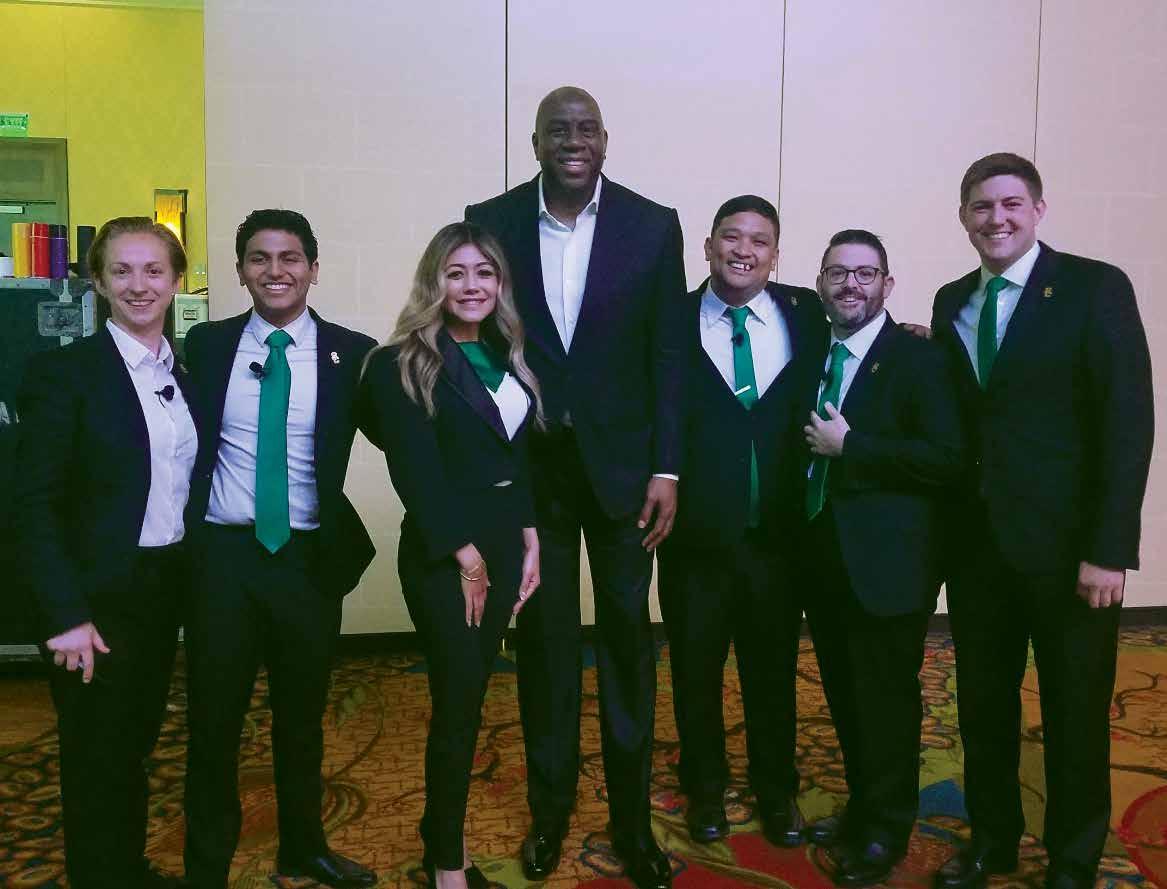
Rosita’s intentionality, passion for the industry, and deep drive is apparent. Part of her daily routine (which begins at 3:41 a.m., by the way) consists of listening to motivational and top-performance speakers to help fuel her own top performance.
“My drive comes from my ‘why.’ At the core, my ‘why’ is to be at my best every single day, and to really show up and to matter, and it’s because I don’t want to lose out on life,” she said.
Her past struggles certainly fuel this. “Once I got clean and was able to get away from that [situation], I told myself I was never going to be there again. I need to show up as my best self every single day so I never get back there again,” she said. “I also know that performance is rewarded.”
Today, Rosita is eager to share her learnings and guidance with her mentees and throughout her company. “You have to relentlessly follow up. I always say you recognize your top performers, you motivate your middle performers, and you teach your bottom performers.”
Continuing the mentorship program she started at Albertsons years ago, this year she brought the program back to her division to build a deeper bench.
“You can have a mentorship relationship across an organization and never even work with that person directly,” she said. “That’s true mentorship.”
She’s also grateful to have her own cabinet of mentors to counsel her through her career, consisting of her current boss Chris Brown, Area VP of Operations, Michelle Larson, EVP of Operations, and her previous district manager Julie Fields, who is now her peer.
“I’m very blessed because I have a mentor at a peer level, at a direct supervisor level, and also someone who can bring perspective on a much higher level. It’s incredible, I’m very honored.”
At home, her fiancé Rhoni is her “number one fan” who supports her through any career transition that comes her way. And of course, Kimberly is still close by. “She’s retired now. I call her my ‘mom.’ I’m one of her daughters.” ■
CALIFORNIA GROCER | 35
I had to sit back, stay humble, and learn from my team. Each time I had to swallow my ego.”

15 QUESTIONS ON 15 YEARS AT THE HELM OF CGA with Ron Fong
1 Your grandfather famously named you after President Ronald Reagan, were you always destined to go into politics?
Yes, I think my grandfather put that into my head early, and it definitely did have a subliminal affect on my career path. But then again, I really didn’t know the path would lead me to where I am today because I thought I was going to be a grocery store owner by running the family business.
Like all grandparents, he would have thought his grandson is going to be president of the United States someday. (Fong laughs) We’re short of that, but at least we made it into the political arena.
2 What’s the accomplishment you’re most proud of during your tenure at CGA?
I think it’s developing our professional team. The staff has all been handpicked, and it’s taken a lot of working with people to get to where we are. It’s the best team I’ve ever worked with. It’s because we put time and effort into building it, and these things take time.
You must have buy-in, chemistry with one another. It’s taken us 15 years basically, but this is the best we’ve ever had it. If you talk to our members, nine out of 10 of them will say our staff is our best asset. That might surprise people because some will assume with my background that it’s a piece of legislation, but bills come and go. Policies come and go. The people are what make the place run.
3 What’s the thing people misunderstand most about California politics?
It’s that we have such left-leaning politicians that it’s impossible to do business here. I can see why they would think that with California social issues; however, how it really works is that there’s a balance at the Capitol. The way you tip the balance is to influence legislators. Even if they are left-leaning, you have to work to move them towards the center. That’s why we do what we do.
4 What has it been like to lead a board with 40-50 members at any given time?
Having a large board has its positives and negatives, of course. The positive is you have diversity of thought from both large and small companies, vendors and suppliers, and independents. It’s unheard of to have this kind of board make-up. The con is that it’s hard to please everybody because of that diversity of interests.
5 What have you learned about people in your CEO role?
The CEO role is not that much different than being the manager at a grocery store. It’s a people business. The most successful leaders and the most successful store managers are communicators.
If you can talk to people, and not be offended by adversity, but rather embrace it and learn from it and hear people, then you can be successful in both of those roles. It’s not really any different. I think I learned those skills from being in a family business, and my communications skills have served me well as a lobbyist and then later as CEO.
6 What’s something you buy each week at the grocery store that would surprise readers?
Salami and cheese snacks…and beef sticks. Our local government lobbyist Tim James calls them “Lunchables for adults,” and I guess he has a point (Fong laughs).
7 What’s been the greatest challenge in your 15 years running CGA?
The biggest challenge has also been personnel. When it’s good, it’s good. But we had to go through some challenges to get to this point. We had the merger, old ways of doing things. Sometimes you need some rough patches to get to the green pasture. The same thing that is our biggest accomplishment was also our biggest challenge.
CALIFORNIA GROCER | 37
8 What board chairs, I know it’s hard to name only a few, have most influenced your time at CGA?
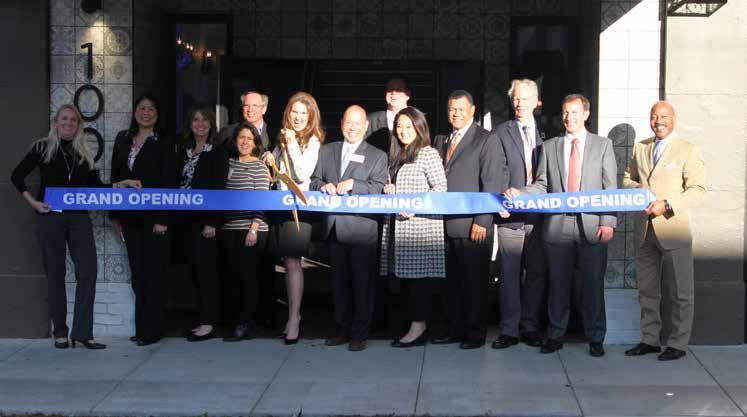
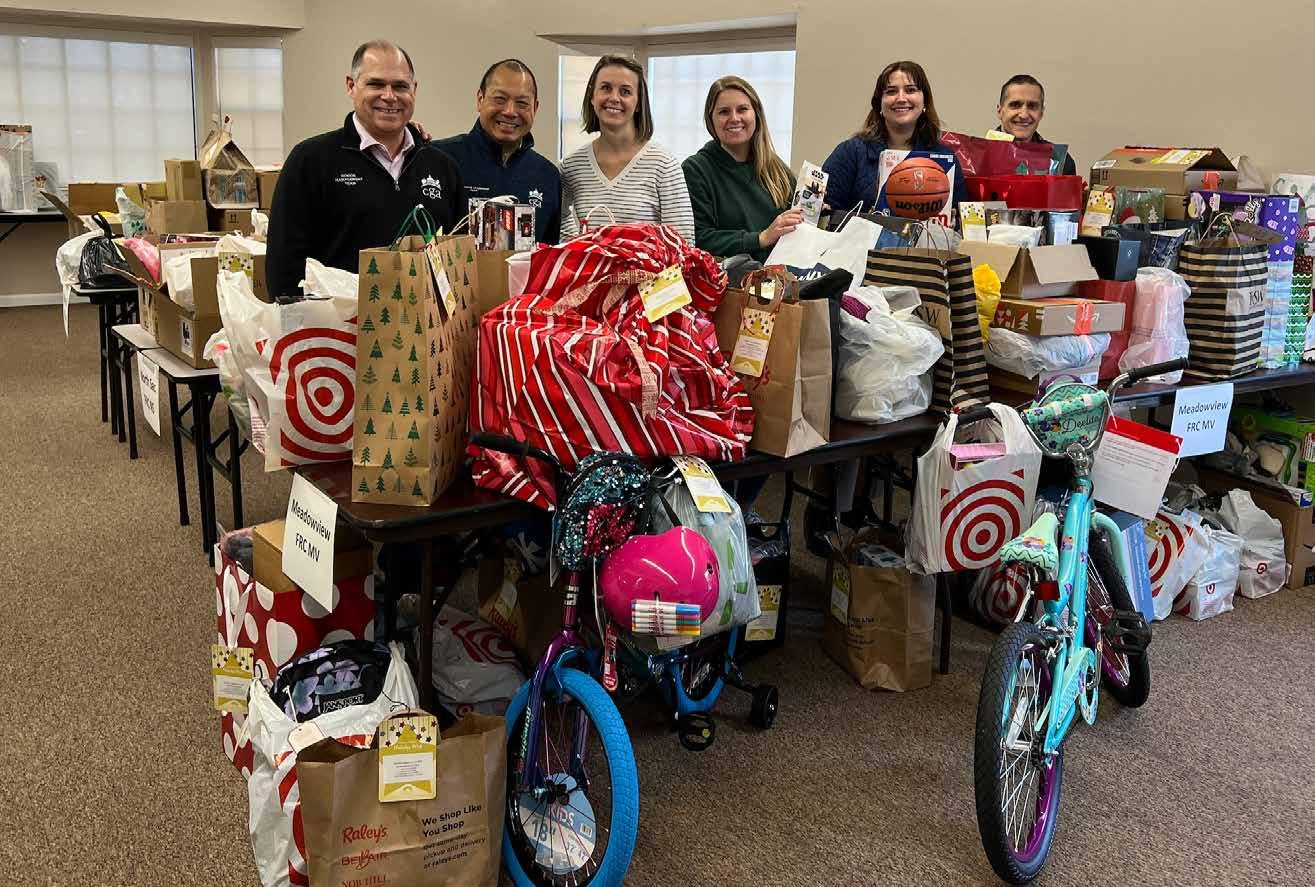
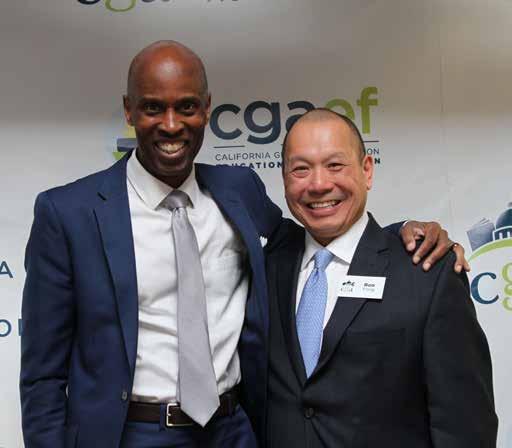
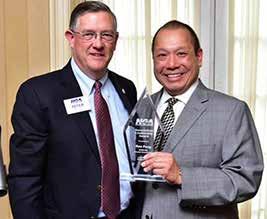
Kevin Konkel, Phil Miller, Jonathan Mayes, Hee-Sook Alden. It’s their people skills mostly, but also efficiency. How to get things done. They’re all doers and really talented as communicators.
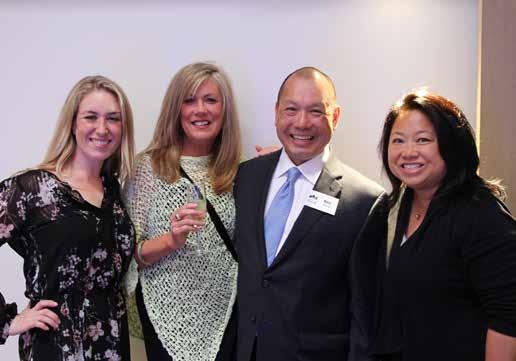
9 What advice do you have for aspiring leaders?
Be open-minded, first of all. Be flexible and listen. Your listening skills are more important than your speaking skills. That’s a real challenge for people. They learn how to speak but not how to listen. A lot of people think they need to speak over others to be heard. Listening skills are something many people have to learn and work at.
10 How have you changed in these 15 years?
Some might not agree with me, but I think I’m less up-tight and more flexible. I had to learn to be that way. I transitioned from a job where you had to be right. Being a lawyer for the DA’s office and then a lobbyist. You have to be argumentative.
Being a CEO is different. I really had to learn to listen: to board, to members, to staff. A lot of this is centered around trust. I trust our management team. When there’s trust you learn to take advice easier. People aren’t trying to get you, which is a different mindset than someone trying to beat you in the courtroom or in the Legislature. Everyone here is working to make our organization succeed and that builds trust.
11 What was it like to buy a building and undertake the construction and design of CGA Headquarters?

It required a lot of patience and waiting. I knew intuitively it was the right decision for the Association going forward. But we had to wait years for the right situation. And even when we found our building, it took two more years to agree on a price. You can’t force these things sometimes. There were a lot of questions because CGA had never purchased real estate before, but I think everyone has seen the benefits of having a home in the heart of the state’s political hub.
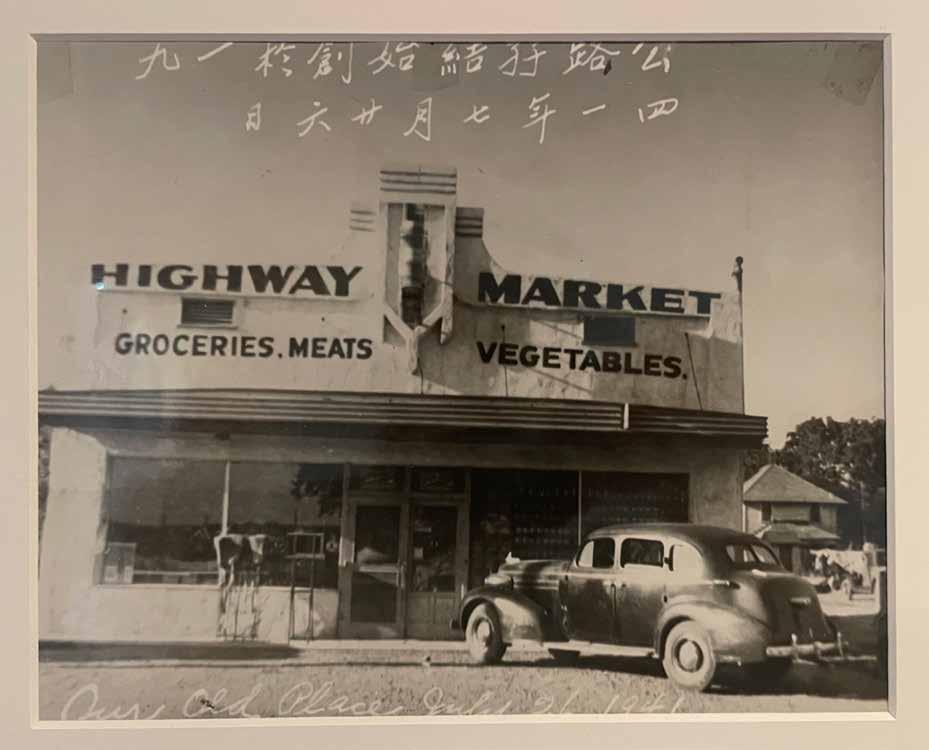
| CALIFORNIA GROCER 38
12 Okay, you’re hosting a dinner party, what’s on the menu?
Mine would be a combination of traditional Chinese dishes that my mother has taught me and barbecue ribeye steaks. The Chinese cooking is something I started to learn with my mom when my dad passed away four years ago. I started spending every Saturday with my mom. We needed something to get her active, and I decided to ask her to teach me how to cook all the things I loved to eat. It turned into something really fun. My routine is to go to the Chinese store every Saturday morning to get all of her groceries. Then in the afternoon, we cook her recipes. Her signature dish, and now mine after much training, is Chinese Poached Scallion Chicken. It’s delicious.
13 What’s your favorite CGA event?
I know people will laugh and say of ‘of course,’ but it has to be the Independent Operators Symposium. It has to do with its structure as much as its location. Very rarely do you get a whole week at an event. With one full week you really get to meet the 100 people that attend and spend good quality time with them.
14 We all know California politics sometimes head into bizarre territory, what’s the strangest political issue you’ve had to work?

Oh my gosh, probably the coconut milk situation. There were accusations that a company in Thailand was using monkeys to pick the coconuts from trees. Then I’d have to say the ban on mylar balloons. You don’t wake up thinking these are the issues that will pop (pun intended).
15 Alright, last question. You’re the reigning fantasy football champion at the office… What’s your secret?
(Fong laughs) Cheating. How I really won was another staffer swapped players with me. He dropped his players, and I grabbed them off the waiver wire. It was controversial, but that’s how you win sometimes: people skills and relationships! ■
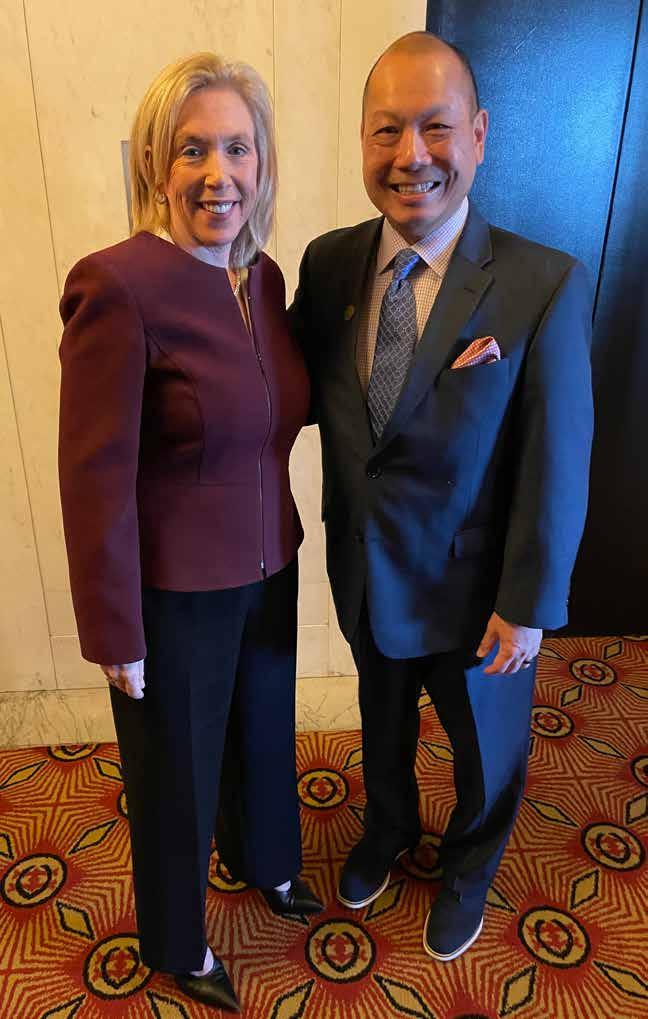
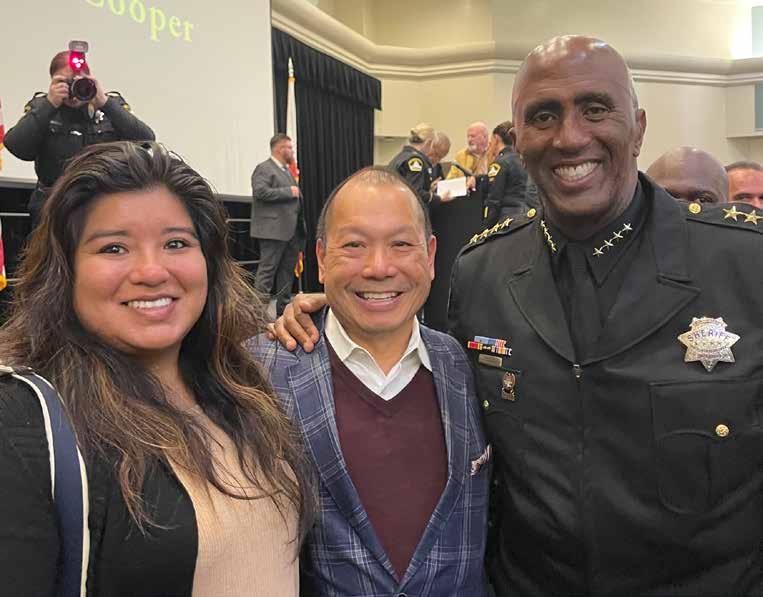
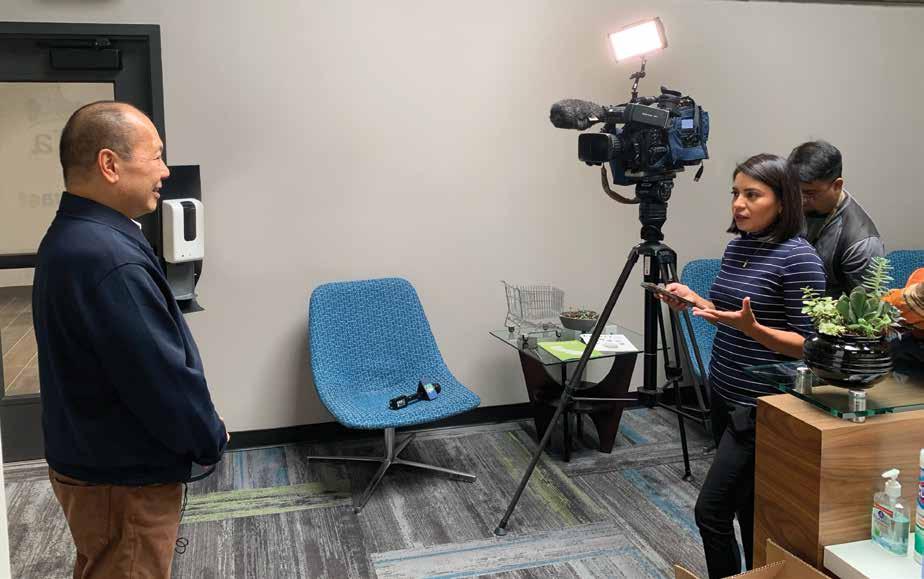
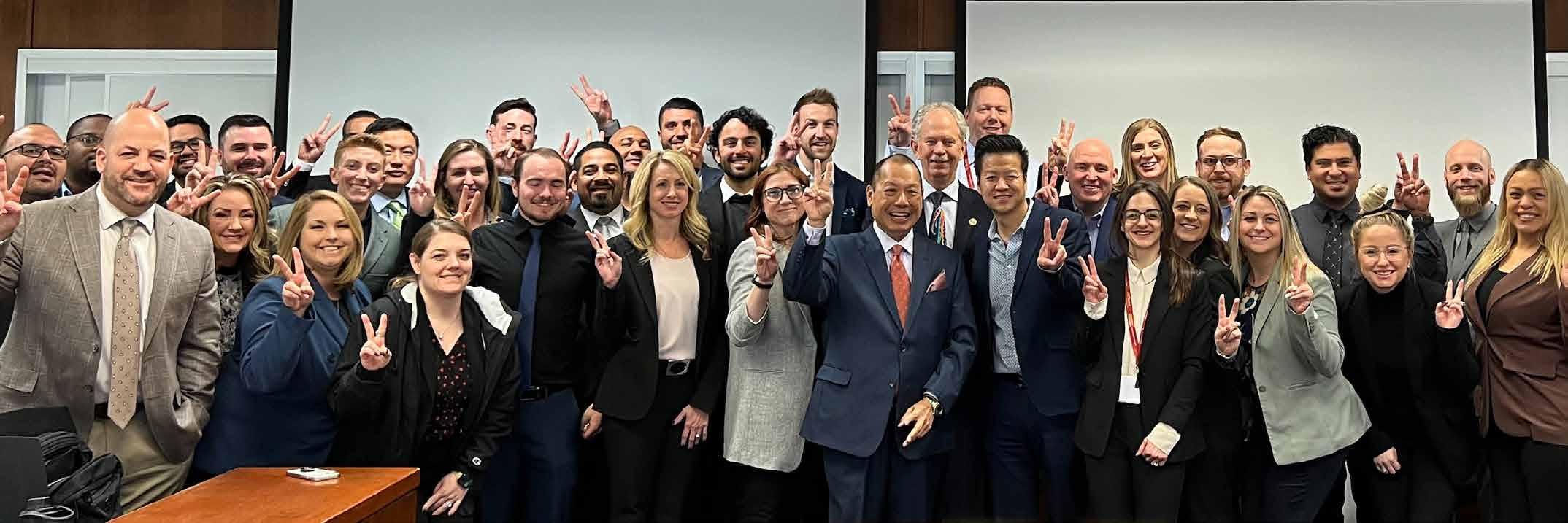

CALIFORNIA GROCER | 39
TopShot@Topgolf
Tee
Event proceeds benefit the College Scholarship Program

Thursday, October 19, 2023 10:00 am – 3:30 pm
Topgolf Roseville | Roseville, CA



To register, visit www.cgaef.org

CGAEFpresents
it
for Scholarships
Up

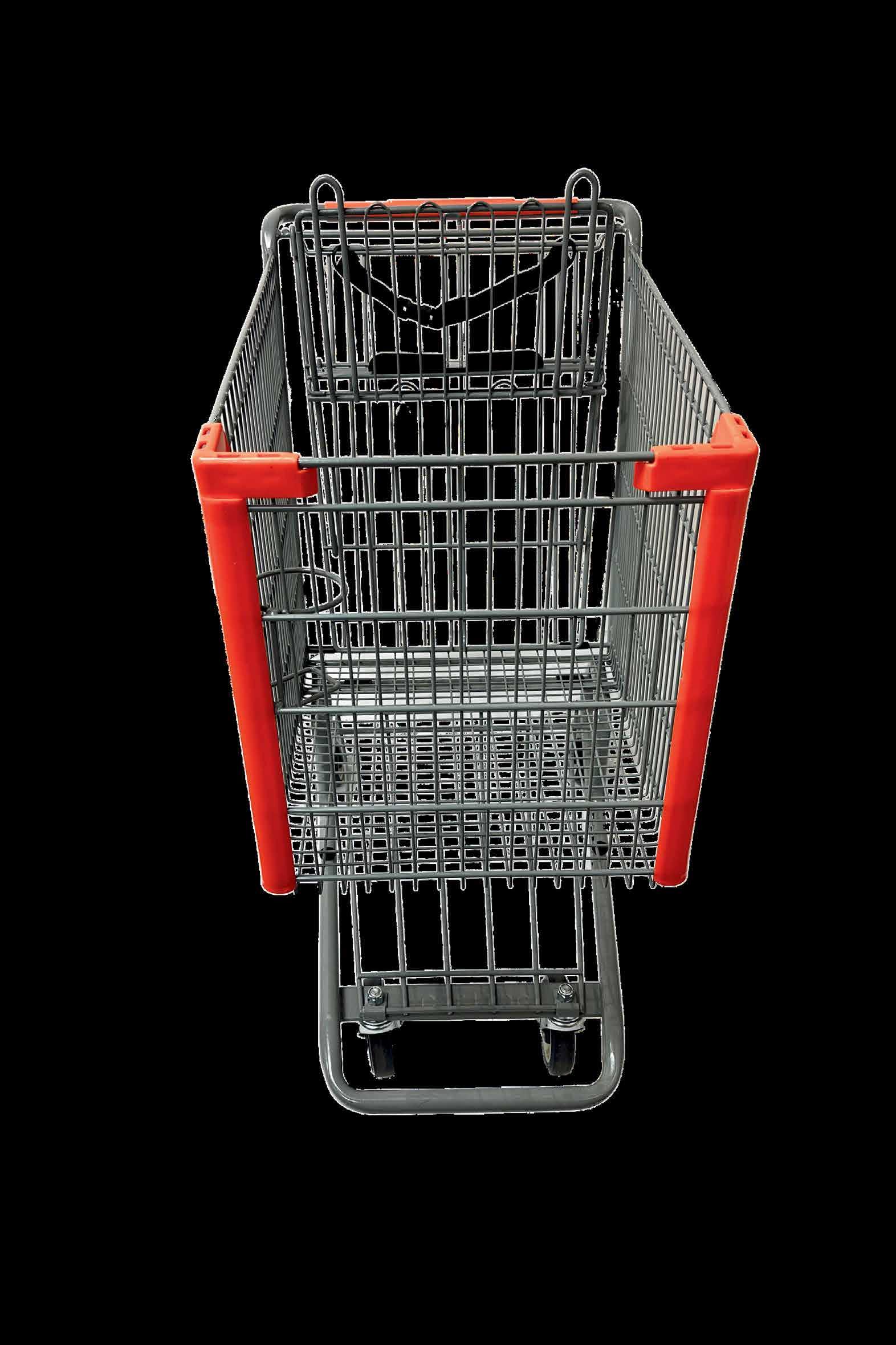

info@retailms.net CART LEASING www.retailsolutionshq.com For More Information Extra carts when you need them most.

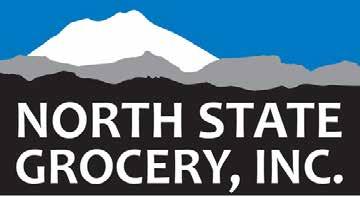



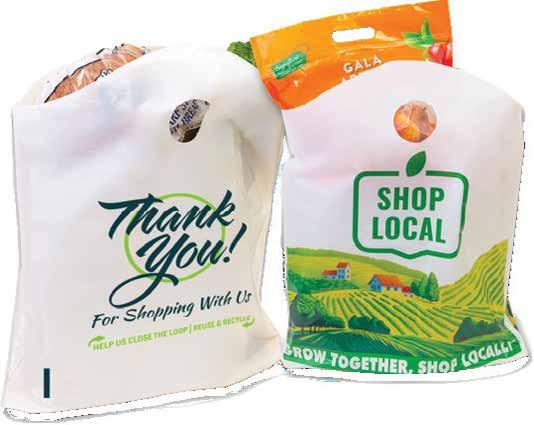




| CALIFORNIA GROCER 42 Y o u r f r i e n d s a t T H A N K Y O U F O R 1 5 Y E A R S O F S T R O N G L E A D E R S H I P Congratulations, Ron Fong CA State regulations can be a challenge for grocers. ELEVATE YOUR BRAND with CUSTOM, REUSABLE BAGS! Give your customers a choic they can feel good about. PreZero has Solutions! O u r b a g s e x c e e d m i n i m u m P C R c o n t e n t r e q u i r e m e n t s s e t f o r t h b y S B 2 7 0 a n d a r e c u s t o m p r i n t e d w i t h e n v i r o n m e n t a l l y f r i e n d l y w a t e r - b a s e d i n k e d o Reach out for more information! Soft Loo Han Wave Top e C e r t i f i f o r u p t 1 2 5 u s e s



CALIFORNIA GROCER | 43 Save on CO2 Refrigeration Energy Costs & Protect Against Downtime* with the PX G1300™ Upgrade your refrigeration operations with the PX G1300 pressure exchanger: • Improve energy efficiency year-round and save money on your electricity bills. • Increase your system’s design temperature to reduce concerns about heat-induced shutdowns. • Installs easily in your current or new CO 2 system. *Based on Energy Recovery laboratory and modeling results Scan to learn how to safeguard against temperatures with the PX G1300. AWARD-WINNING COMMERCIAL ARCHITECTURAL FIRM RKAA.COM | (602) 955-3900 | 2233 E THOMAS RD, PHOENIX, AZ (949) 954-8785 | 1151 DOVE STREET, SUITE 175, NEWPORT BEACH, CA ADA Compliance Reviews Lighting & Rebate Packages Site Entitlement Processing Prototypical Design Packages Exterior Facade Renovations Food Production Facilities Automated Distribution Centers Restaurant / Kiosk Design Cold Storage Warehouses Online Ordering Design
CGA LAUNCHES “CGA RADIO” PODCAST
The California Grocers Association has launched its first podcast “CGA Radio” for grocery and food industry professionals. CGA Radio explores the people, ideas, and brands shaping California’s grocery community.

Hosted by CGA Communications Specialist
Grace Becker, season one consists of five episodes and introduces listeners to “people you should meet” in the food and grocery business including: Cardenas
Markets VP of Construction and Maintenance
Veronica Jimenez; social impact entrepreneur
Mark Brand; CGA President and CEO Ron Fong; Raley’s SVP of Store Operations Levi Wingo; and Todd Linsky, principal and owner of Todd Linsky Consulting. These insightful guests lend their perspective on compelling topics from education to food insecurity, store design, organics, and solving hunger.
Tune into CGA Radio on Apple Podcasts, Spotify, Google Podcasts, and Android. Subscribe to be notified of new episodes and leave us a rating if you enjoyed.
Thank you to our Season 1 sponsor of CGA Radio: Kimberly Clark-Corporation. ■
CGA AND CGA EDUCATION FOUNDATION HOST STATEWIDE STORE LEADER TRAINING SEMINARS
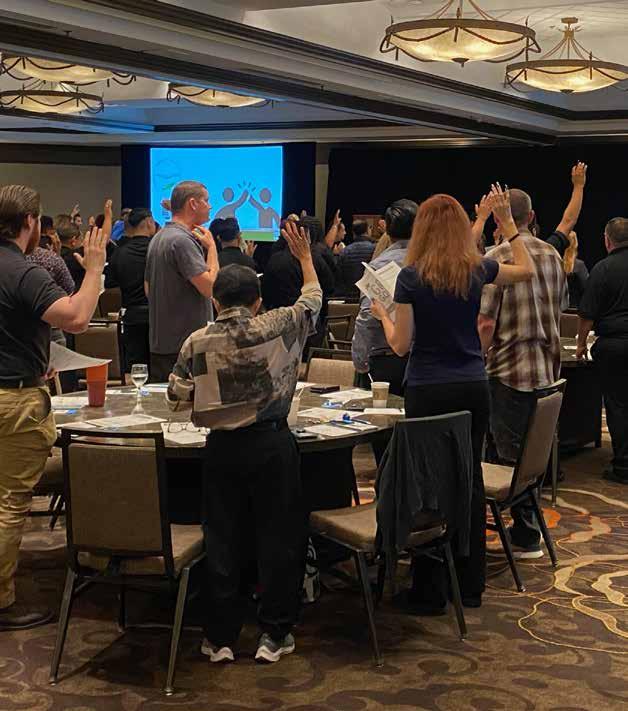
The California Grocers Association and CGA Educational Foundation were thrilled to bring back our popular store leader training seminars to both Northern and Southern California this year. Store leaders from across the state— representing over two dozen grocery retailers— joined us for two day-long training seminars in Costa Mesa and Walnut Creek packed with informative speaker sessions and interactive exercises for store directors, assistant directors, and department managers.
Our training seminars were designed to give store leaders an opportunity to refine their leadership skills and further their professional development. Leaders had the opportunity to collaborate with one another and share ideas and best practices with the group. The event was book-ended by author and speaker Stan Phelps who inspired attendees to drive employee engagement by incorporating team building, recognition, and empowerment into their management practices.
Instructors from the WAFC Retail Management Certificate program gave attendees a taste of the curriculum with sessions on the principles of retail management, including marketing, merchandising, and customer service.
Finally, Christopher P. Norris from Wicklander-Zulawski & Associates, led a practical session on deescalation and conflict management to help store leaders peacefully resolve disputes, manage unwanted patron behavior, and maintain safe and profitable operations. After a full day of training, leaders came away with newfound inspiration and tools to bring back to their staff. ■
CGA NEWS
| CALIFORNIA
44
GROCER
NEW MEMBERS
CGA welcomes the following members:
A-Gas
1646 N Litchfield Rd
Goodyear, AZ 85395
Contact: John Carlson, Regional Account Manager
E-mail: john.carlson@agas.com
Phone: (480) 234-6488
Website: agas.com/us
Bay Cities
5138 Industry Ave
Pico Rivera, CA 90660-2550
Contact: Winston Hewett, Sales Executive
E-mail: winstonh@bay-cities.com
Phone: (562) 948-3751
Website: bay-cities.com

Clarkston Consulting

2655 Meridian Pkwy
Durham, NC 27713-2203
Contact: Stacey Erickson, Client Solutions Executive
E-mail: serickson@ clarkstonconsulting.com

Phone: (408) 489-6489
Website: clarkstonconsulting.com
EJL Entertainment — Yama Sushi Marketplace
913 W Las Tunas Dr San Gabriel, CA 91776-1022
Contact: Scott Kohno, Chief Executive Officer
Phone: (626) 703-4113
Website: ejlentertainment.com
Gallagher Risk Management
18201 Von Karman Ave Ste 200 Irvine, CA 92612
Contact: Joshua Belden & Kevin Beakes, Gallagher Grocers

Practice
E-mail: joshua_belden@ajg.com; kevin_beakes@ajg.com
Phone: (949) 349-9800
Website: ajg.com/us
ReposiTrak

5282 S Commerce Dr Ste D292
Murrary, UT 84107
Contact: Mark Johnson, Partner/Sales — West Coast
E-mail:
mjohnson@repositrak.com
Phone: (323) 240-8848
Website: repositrak.com
WK Kellogg Co
One Kellogg Sq
Battle Creek, MI 49017
Contact: Stacey Ring-Sanders, VP, Grocery Industry & Category Leadership
E-mail: stacey.ring-sanders@ wkkellogg.com
Phone: (949) 510-9274
Website: unleashingourpotential. com/en/wk-kellogg-co/

In Good Hands 2000 N Plaza Dr Visalia, CA 93291

Contact: Hannah Robbins, Consultant E-mail: hannahrobbins@ californiadairies.com
Phone: (847) 852-9452
Website: ingoodhandsfoods.com
Lone Peak Labeling Systems

4000 Bridgeway Ste 315
Sausalito, CA 94965-4805
Contact: Chris Appelbaum, President
E-mail: chris@lonepeak.com
Phone: (801) 243-9500
Website: lonepeaklabeling.com
Navajo Inc. 5330 Fox St
Denver, CO 80216
Contact: Josiah Hensley, Dir., Sales
E-mail: jhenseley@navajoinc.com
Phone: (816) 682-8810
Website: navajoinc.com

RKAA Architects, Inc.

1151 Dove St Ste 175 Newport Beach, CA 92660
Contact: Tom McCrystal, Vice President
E-mail: tmccrystal@rkaa.com
Phone: (949) 954-8785
Website: rkaa.com
Smithfield Foods
200 Commerce St
Smithfield, VA 23430
Contact: Jim Monroe, VP, Corporate Affairs

E-mail: jmonroe@smithfield.com
Phone: (703) 559-1875
Website: smithfield.com
Two Good Sons
dba American Farmers Network 500 E Pike St
Seattle, WA 98122-3618
Contact: Brett Shank, Sr. Dir., Sales
E-mail: brett.shank@ americanfarmersnetwork.com
Phone: (760) 684-9248
Website: americanfarmersnetwork.com
Workstream
521 7th St
San Francisco, CA 94103-4709
Contact: Emily Hancock, Demand Generation Specialist
E-mail: emily.hancock@workstream.is
Phone: (801) 597-3135
Website: workstream.us
CGA NEW MEMBERS
CALIFORNIA GROCER | 45
BY GRACE BECKER
THREADS DEAD?

Despite its flood of 100 million sign-ups during its debut in July, Meta CEO Mark Zuckerberg told staff that more than half of Threads users have left the app. In response, Meta unveiled new Threads features like keyword searching posts, and further integrating the app into Instagram. Though Threads was anticipated to be a fierce competitor to X (previously Twitter) after Elon Musk took the wheel and delivered a hasty rebrand, this news begs the question, will it ever catch on?
Another month, another food trend. Though, this is one that existed long before it was named. Coined on TikTok as ‘girl dinner’ the rules of this meal style are loose but low-effort and require little to no preparation. Girl dinner can be anything from a charcuterie-adjacent snack assortment of bread and cheese to a piece meal plate of dino nuggets, a handful of pretzels, and some m&ms. Like the New York Times puts it, think Lunchables. What’s most important is that the meal is assembled and consumed only for oneself, with whichever components sounds tasty at the time, emphasizing assembly over cooking and appeal over nutritional value. Off chutes of girl dinner have started to pop up with identical principles, like “husband dinner,” for one. Though not always glamorous, you know girl dinner when you see it.
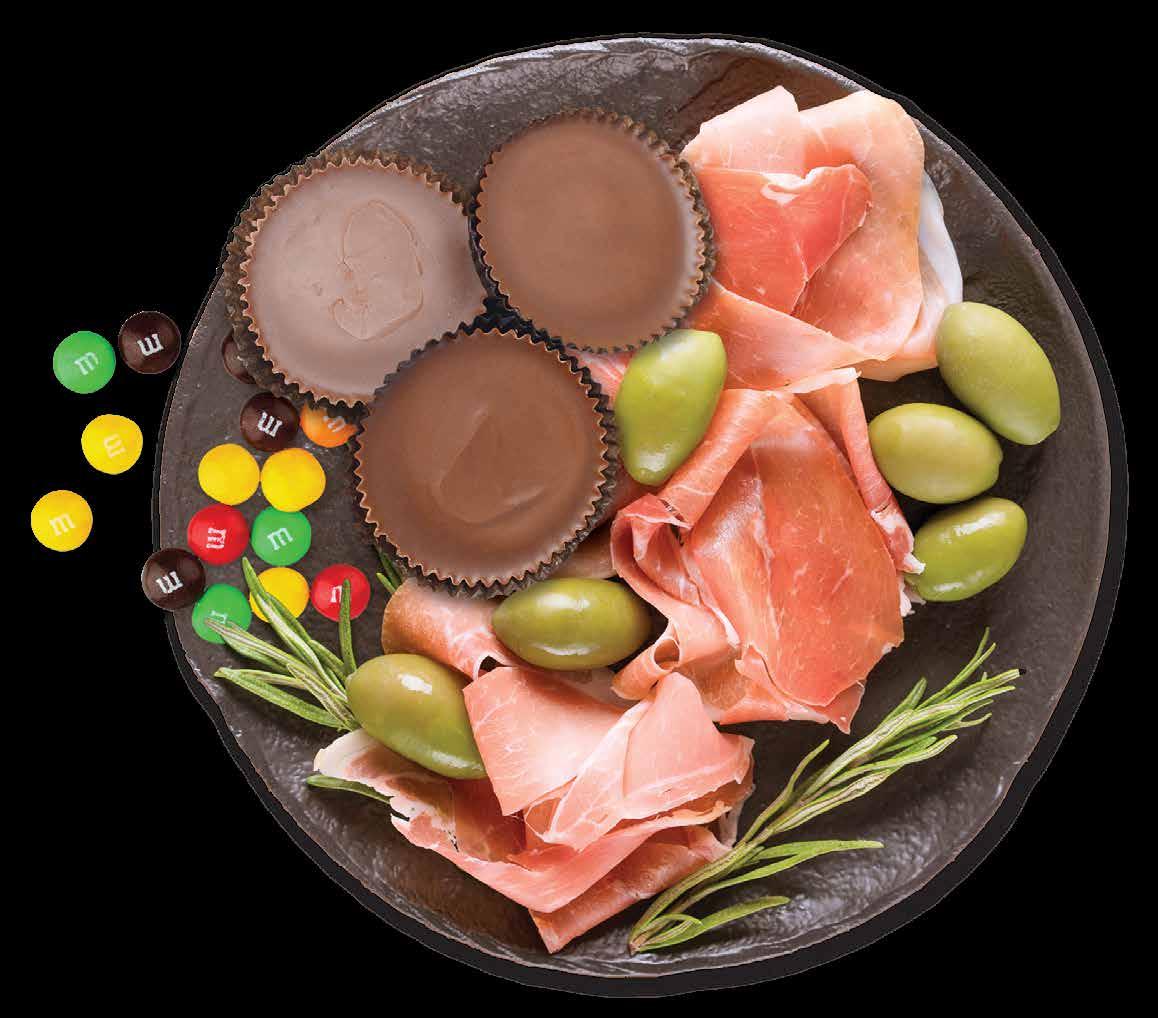
Find My Friends
It’s been the summer of Barbie and the world is looking a little pinker. In anticipation of the Barbie movie, which at the time of this issue has earned over $1.4 billion at the box office, making it the highest grossing domestic movie of the year, brands far and wide released collaborations with Barbie and the gang at Mattel. Time Magazine reported that according to public record, the Copyright Office in the Library of Congress has registered more than 2,000 Barbie-related works including suitcases, makeup, dolls, games, songs, and food for the movie. Interestingly, collaborations were targeted towards adults and children alike.
Find My Friends is gaining traction with a new audience. The app, which has been around since 2011 and digitally shares your location, is increasingly being used as a safety precaution among younger Gen Z users. In the era of online dating, users are looking to the app as a tool to keep tabs on their friends when they go out for first dates, or during late night plans. Coming this fall with iOS 17, Find my Friends will include a “Check In” feature which allows users to let their people know when they’ve reached their destination.
OUTSIDE THE BOX NEW RETAIL PERSPECTIVES !
iStock
iStock
| CALIFORNIA GROCER 46




MARKETED BY CLASSIC WINES OF CALIFORNIA REDEFINED. By selecting premium fruit from our family-owned California vineyards and paying homage to old world techniques by traditional fermentation in the bottle, known as Méthode Champenoise, Domaine Laurier produces a meticulously balanced Sparkling Brut and Sparkling Brut Rosé with a modern sensibility. These wines beg to be enjoyed now, when you want, where you want; DOMAINELAURIER.COM
Nestled in the rolling hills of Sonoma County, California, Manzana Products has been crafting premium apple juices and ciders since 1922. With over 100 years of expertise, we believe in maintaining the special taste that mimics biting into an apple just picked from the orchard. That’s why we use only fresh, whole apples in all of our recipes, and without added sugars or preservatives, you can surely taste the difference with every sip.

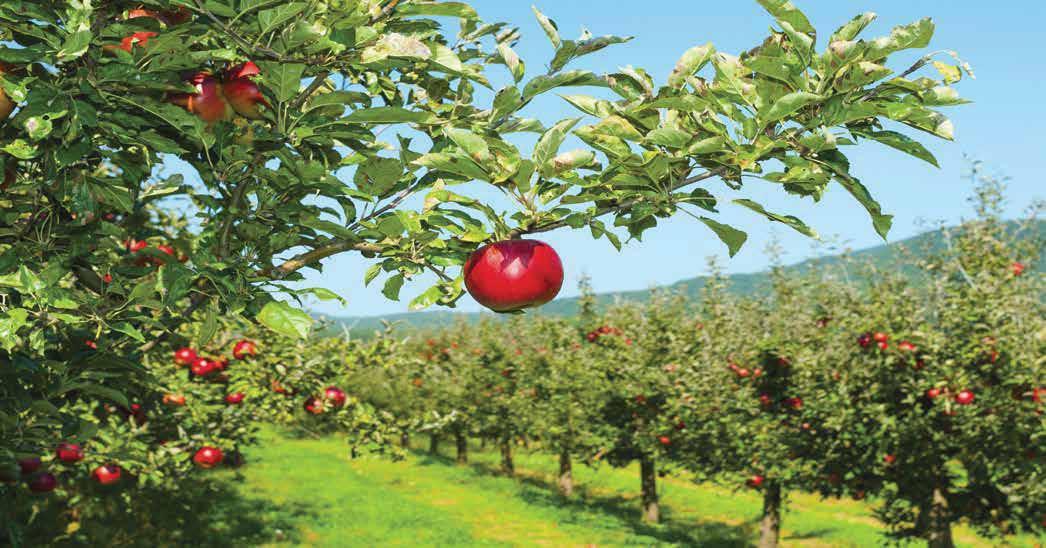
Mariano Events is a nationwide experimental marketing agency specializing in executing high quality sampling events for innovative food, beverage, and wellness brands.













| CALIFORNIA GROCER 48
See Full Line at medicinal-foods.com DENTITE CAVITY HEALING TOOTH ARMOR NANO HYDROXYAPATITE THEOBROMINE NANO SILVER TRACE MINERALS Nano-Hydroxyapatite Supports remineralization of dental caries to refurbish tooth enamel and reduce sensitivity. Nano Silver Targets bad bacteria while leaving healthy flora alone. Theobromine (Food of the Gods) Extracted from Cacao, Expands protective Apatite crystals in tooth enamel by 4X. SUPPORTS REMINERALIZATION, WHITENING & ENAMEL RESTORATION Directions Apply 1-2ml (Approx.1-2 droppers) directly onto teeth. Brush normally with or without toothpaste. May do a “Treatment” for 5-15 minutes on teeth, before bed. Rinse. orders@medicinal-foods.com Email for sales sheet
www.marianoevents.com Store Demonstrations • Pop-Up Events • Influencer Marketing Social Media Management • Product Launches • Event Sponsorship Food & Beverage PR • Culinary Experiences
Our mission is to tell the story behind the brand.






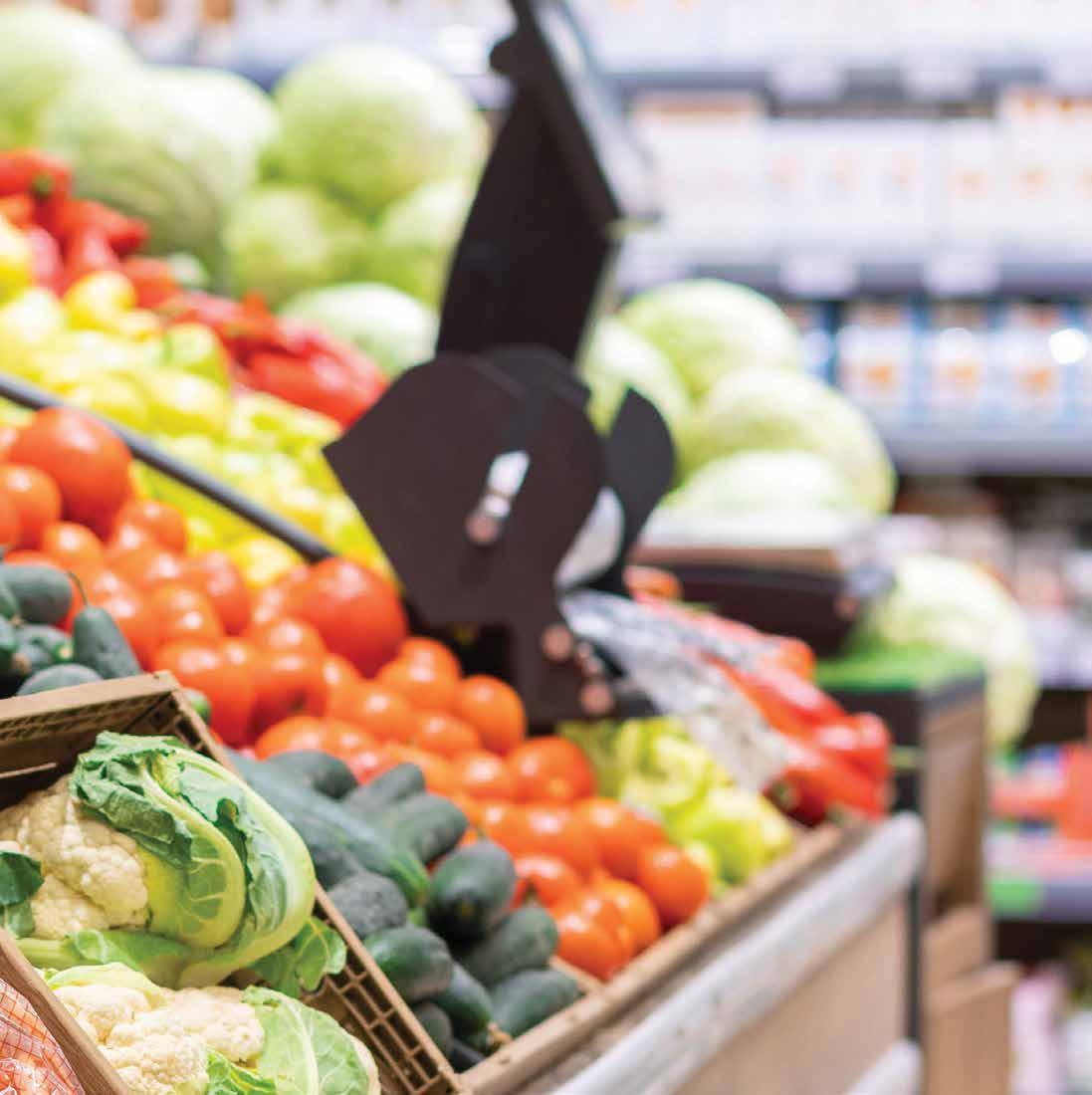





CALIFORNIA GROCER | 49 green onion supplieR the only you’ll ever need mercatus.com/mercatus-mobile solutions@mercatus.com Learn more: Cart Retrieval • Cart Repair • Cart Sales • Cart Transfers Electric Cart Repair • Backroom Rack/Cart Repairs Cart Containment & Locking Wheels Maintenance www.wcshoppingcart.com 209-886-1000 pleasantvalleyeggs.com
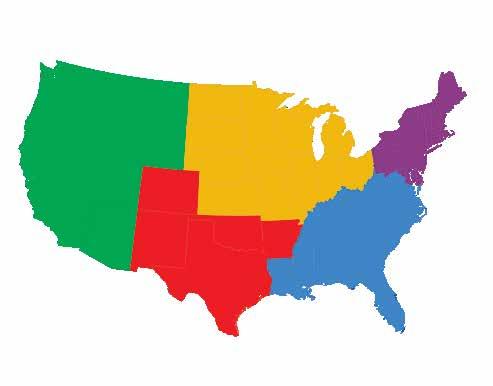














































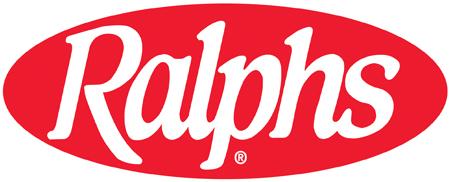
| CALIFORNIA GROCER 50 For the best value add a digital subscription and stay informed anywhere, anytime. Providing the intelligence you need to compete by covering news and features on all aspects of the retail food industry across the nation through 5 regional monthly editions. JANUARY 2023 Your grocery news and 1967 The Shelby Report of the Southwest ECRS helps grocery retailers be creative, bold with CATAPULT, its ‘differentiator’ based challenge Caroline “Waiting for the show. Waiting what hold. Waiting and Waiting, doing wants wants creative they experience they Thisincludes CATAPULT retailers the attract, delight customers loyal CATAPULT’s sets competitors.Using Unified CATAPULT databaseenterprise. traditional self-checkout, WebCart, real allows multiple entersingle headquarters Inside coverage e-commerce see pages Please United Family supports Texas Blue Sand Project Raises awareness of human trafficking year has joinedtions of Hope the Blue Sand awareness the Plains. An Texas involves cracks Human Trafficking The represents prevent victims The three together forsurvivors sexualassault. page Economy in New Mexico has made ‘major improvement’ over past year Association against hikes minimum wage, liquor tax by Treva creator New Mexico’s also not director Association. anindependent Albuquerque. unemployment percentage state, mostbusinesses signsposted. gettingbetter moving certain to sametime, are the major ago.” felt across new conversations customers prices explainthat producershaving fertilizers, labor, many other that are – goesfor chain,”hesaid. down not any other product Please The Shelby Report of theMidwest JANUARY 2023 Yoursource grocerynewsandinsightssince1967 AWGCEOtoretire,successornamed Smithhasguidedwholesalersince2015 Kansas City, Kansas-based Associated WholesaleGrocers announcedthatCEO, will Funk assume office hisretirement. joined AWG and becamedent CEO Smith focused independent supermarket operators’ development andsuccessthroughout career. 48 experiencein industry,with those wholesale.his with hehas theerative membership from Midwest company 1,200 stores, divisions and sales $3.2 to U.S.company retail exceeding $24 and wholesale topping billion. “David’s retirement leadership transition hasbeen theplanning for years,” BarryQueen, chairmanof board. “The board worked him leading management consulting recruiting firm, with executive leadership team, comprehensive strategicsuccessionplan the years.” his Smith described time the helm incredible experience my an unmeritedgift.”blessed have chosen serve, and embraceAWG home,” said. board through comprehensive deliberate process, selecting thenext-generationchiefselection ensures the executive leadership AWG remain provenleaders within started AWG president Valu Merchandisers Company October 2012. two leading AWGsubsidiary, assumed role of center December2015, became and merchandising marketingofficer. January he AWG’s chiefsupply and merchandisingofficer becomingthe AWG followingyear. TwofromMidwestamongtopgrocers Nominationscamefromtheirwholesalers Twoof ninerecipientsnationwide Independent Alliance’s highesthonor retailmembers from Midwest. RichHoffman Plaza inGarrettsville,Ohio, Jimmy of Hometown Indiana,headlined list the2023Retailer Award, IGAannounced Hoffman’sdistributor SpartanNash,while HouchensFoodIndustries. honor presentedannually grocers have providedleadership excellence communities. storeoperators their werenominated theirwholesalers,placing among best 30,000independentgrocers U.S. “The Retailers the exemplifythefacets being prosperouscommunitygrocerthat deliverlocal freshproducts,” John CEO “Theyhave establishedmeaningful relationshipswithintheircommunities displayoutstandingleadershipqualitiesasemployers. proud honor for achievements.” SVP Retail BusinessDevelopmentDougFritsch NationalRetailerAdvisory Hy-Veemakesseveral keyleadershipmoves Includingfirstfemalepresident Among leadership changes announced during Hy-Vee Inc.’s recent annual stockholders meeting, Jeremy Gosch named chairmanof West Moines,Iowa-basedcompany’sboard directors. ExecutiveDirector Executive Chairman BoardRandy sharedthat longtime Hy-Vee executives – Donna Tweeten Aaron Wiese have promoted to president.Tweeten, woman in company to the will oversee brands, merchandising, marketing and digital initiatives. She will responsiblefor operations Media,Hy-Vee’s retail network. Wiese becomes president Inc.,overseeingoperations company’s healthcare retail pharmacy locations, as newest subsidiary, Hy-VeeHealthcare. Wiese will charge technologyinitiativesfor company and continue leading several subsidiaries, Hy-Vee’s supply distributionoperations the company’sregion. see David Gosch RandyEdeker Sherlock GeorgiaVanGundy see 30 The Shelby Report of the Southeast JANUARY 2023 source for news and insights 1967 Network designed to energize, inspire female grocery execs Chelsea NGA you readyinspiring development programs industry? meeting Leaders content on leadership industry trends networking. than experience for grocery step what we ongoing growth enhancement women’scareers sector. first meeting, Women America past D.C., among wereon promises development. Kristin Woodman’s WGA president, connections Hometown Foods IGA thriving in NE Georgia Powered meat department, store surpasses expectations Jordan Tennessee yard, Hometown picturesqueVest store upin life grocery age.graduatingVestgot school,A&P him North While A&Pwas damagedby aboutshuttered. seven and and up. IGA,” career ventures role that Piggly Tennessee, less than years.McCaysville. owner, purchase heard he Vest would come which understood. later, my rang said, ‘If - know.’ right see and –since, store has outperformed imagined. page see ECRS helping grocery retailers be creative, bold with CATAPULT Carolina-based into2023 for BeBold.” been ofwaiting, Catoe, storms uncertaintystorm would got gotlower.whiledoing empower waiting. bold way they they they energy continuing CATAPULT the with - and to convert one-off patrons. CATAPULT’s Logic from ourdifferentiator,” said. Transaction CATAPULT database transactional point “So that’s of WebCart, - updates the same Logic retailers with access enterprise coverage feature, e-commerce technology,see JANUARY 2023 Yoursourceforgrocerynews insightssince1967 The Griffin Report ofthe Northeast aShelbyPublication boldECRShelpsgroceryretailersbecreative, withCATAPULT,its‘differentiator’Western North Carolina- basedECRS going 2023 with challenge retailers: MuchCreative.the twoyears have constant waiting, Caroline Catoe, “Waitingpresident.forstorms pass orfor nextstorm show.Waiting uncertainty of the future would Waiting lines longer and expectations got lower. Waiting,andall whiledoingnothing,” said. 2023, wants empoweritsretailersstopwaiting.Thecompanywantsthem be andcreative waythey the they work,theexperiencethey and energy Thisbring.includescontinuing developCATAPULT give retailers the creative with theirofferingsand attract,delight convert customersfrom shoppers patrons. CATAPULT’s Unified Transaction Logic sets ECRSapart itscompetitors. is differentiator,”Catoesaid. Using Unified Transaction Logic, CATAPULT leverages singledatabase updateeverytrans- actionaltouchpoint anenterprise. that’s traditional of self-checkout,WebCart, AutoScale informationupdates real UnifiedTransactionLogic allowsretailers withmultiplestoresaccess theirentirefrom singleheadquarterslocation. Please page UNFIpreparingtopresent innovativeportfolio,trends Upcomingshowfirstoffourin2023 Providence,RhodeIsland-based NaturalFoodsInc.plans brandswelcomeabout4,000customers,suppliers,vendorsandemerging itsSpringandSummerShow Feb. Orlando,Florida. show,whichkicks thefirst UNFI’sfourmajorselling showsin offersattendeestheopportunityto withexperts across natural, GM/HBC, meat, seafood, produce, bakery and departments takeadvantage viewwhat’strending the ProductShowcase networkwith community industry experts. “Our selling shows way for customers discover productsandtrends reachandrelevancewithshop and return, help them drive sustainable growth competitive edge marketplace,” said Jillian D’Elia, director eventstrategy UNFI. “Simultaneously, our selling shows create compelling experienceoursuppliers makeconnectionsandlastingrelationshipswith broadnetwork retailerslooking motivateshopperswith on-trendportfolio products. “Throughout 170,000squarefeet showfloorspace,retailers supplierscan therightselection products,pricesand people themoptimizethe andsummerseasons.” Please Exec:Resilience‘productofchallenge’ SEGchiefshareskeystoweatheringindustrystormsby Bennett contentcreator you’re going through hell,keepgoing.”Southeastern President and Anthony Hucker referenced the quote from Winston Churchill during remarks recent Midwinter Executive ConferenceOrlando,Florida. Hucker shared photos Mexico Beach, Florida, Hurricane Michael landfall Category storm October2018. noted thatHurricaneIanmadelandfall Category storm fewmonths just milesfrom Orlando Costa. “Talk misfortune. Talk change. this,this resilience anability recover from misfortune change,” said. Resilience concept we must embrace as move next evolution, this S-curve what our industry become. Resilienceis product challenge.Challenge basic ingredient resilience. And simplycannot onewithout other.” Hucker thegroceryindustrycontinuesfacehistoricchallenges.Theresilience the supply chain been tested. have felt bending,but neverbroke,thanks many that heretoday.” He said grocery shoppers counting industry leaders value stretch dollars, convenience simplify their increasinglycomplexschedulesandproductsthatmeet intersection quality,nutrition,ability sustainability.” all now familiar with demands ESG, “we’refacingunprecedented dynamics change ourenvironment.The andsustainability planetPlease page AnthonyHucker 2023 Your grocery news and 1967 The NOVEMBER 2022 grocery news The Shelby Report of the West Strategic Conference dazzles in the desert Offers messages ‘our members want to learn from’ Grocers Association 2022CGA person COVID-19 Ron Fong Report’s be back first comfortable the theme ran Sept. Convention Springs, California. rounds California its attenAccording planning, end-to-end well-being inclusionpathautonomous to profitability. return close as Slam partnership with Lighthouse Foundation, about noticed CPG companies attention Please Additional Strategic foundonpages morefrom RonFong AFS taps Rice as next leader Succeeds Obray, who died August Salt grocery wholesaler presidentand company.followingthepassing served he died neurological “Bobwas directorsworkedclosely - establish the company,” friend ever fill are committed following served CFO, president retirement Obray directors Food Associates, will be - ratedwith monthin The retailer-owned Associated Food and retail Intermountain knowledge the position, worked for years. Food Associated Operations. decades combines expertise independent vital our short- Atkinson, Associated connect members and partners Associated and enthusiastic coop- direction.” Pleasesee Grocery retail giants pitch merger $24.6B deal pending regulatory, anti-trust review Co.and mergerAlbertsons two organiza- supermarket combination reach and deliver food 2024, has been approved However, review. terms, acquire andpreferred estimated $34.10per enterprise value including transaction, shareholders.cashdividendcomponent of the shareconsiderationwould dividend, about$6.85 cashdividendTogether, Kroger distributionemployeesing 2,015 across plans to for customers SAVE 20% WHEN YOU BUNDLE ALL 5 REGIONAL EDITIONS Scan QR code or subscribe online at theshelbyreport.com/subscribe or by calling 888-498-0771 North Carolina. After that store closed, he began less than miles from McCaysville. He managed understood. So about two weeks later, my phoneested, me know.’ Well, called the bank right –outperformed what he could have imagined. Griffin Report NortheastThe Shelby Report Region Wise. Nationwide. CONGRATULATIONS CGA Educational Foundation 2023 Scholarship Recipients ERIN MILLER ALIYAH ROUSE MASON WASHINGTON HARRISON YORK
Customized Grocery Workplace Harassment Prevention Training
All employees must be certified every two years
The California Grocers Association Educational Foundation provides online supervisor and employee training programs for workplace harassment prevention. These easy-to-use training modules are customized for the grocery industry and are fully compliant with California law.
CUSTOMIZED TRAINING FOR GROCERY INDUSTRY
• Real life in-store, office and warehouse scenarios
• Convenient one-hour employee course
• In-depth two-hour supervisor course
AFFORDABLE
• Substantial CGA member discounts
• Quantity pricing
• Flexible LMS hosting opportunities
EASY TO IMPLEMENT
• Tablet/desktop ready
• On-demand training for your employees
• Convenient reporting for compliance tracking & verification
English & Spanish Trainings Available
Purchase Today!
To learn more about these training modules including special CGA-member pricing, contact the CGA Educational Foundation at (916) 448-3545 or foundation@cagrocers.com.
CGA Educational Foundation | www.cgaef.org/training | (916) 448-3545
Shopping in an App Addicted World

I take a small amount of pride in being born in the last generation of human children to have grown up in an era without technology. I was in fourth grade when our family got our first home computer and even then, I mostly used it to “paint” pictures on a rudimentary art program. By the time I got to college, everyone had a computer, but we mostly used them to download music. I still went to the library to do research and write papers. But sadly, these days, I’m just as addicted to the tiny supercomputer I keep in my purse and call a phone as everyone else. And its usefulness in all aspects of my life, including shopping for my family, is undeniable.
It seems like every store I shop at has an app that they want me to download, but I’ll be honest: I don’t want to take up all of my phone’s memory on apps for places I buy chicken nuggets and milk, so I’m picky about which apps I do use. Stores that don’t have customer-accessible Wi-Fi available but require an app to access sale pricing are an automatic nope in my book. As much as I enjoy the “me time” shopping provides me, I don’t want to spend half my shopping trip holding my phone up in the air trying to get a signal so I can get chicken legs for $0.99 per lb. The takeaway should be that if you want customers to use your app in real time while shopping, you must give them the necessary access.
The few apps I do use with any sense of regular commitment are those, like my Starbucks app that provide me with a reward for their use. Apps like Fetch, which asks users to scan their grocery receipts for points toward gift cards, is one I’ve used for years and has rewarded me well for simply snapping a picture of the receipts I collect wherever I shop. Pay me in coffee, and I’ll download whatever you want!
When it comes to planning where to shop, I like the Flipp app, which compiles all the local circulars for stores near me and recommends sales based on my designated shopping list.
But in the end, no app will ever replace habits and personal preferences. While apps offer a new level of communication between me and the grocers I shop with, for the most part, shopping is still a sensory experience. I want to ask a real person about how to choose the perfect papaya or talk to the guy at the deli counter about how I like my cold cuts sliced. No amount of technology should ever replace the human experience of shopping. But, after all, I am a product of a pre-tech generation. That may all change when my tech-savvy toddler is shopping for her own family one day. ■
KIMBERLY RAE MILLER WRITER
MOMMY BLOGGER iStock | CALIFORNIA GROCER 52
Technology is a part of everything we do, even feeding our families


HELPING DOMESTIC ABUSE SURVIVORS AND THEIR PETS ESCAPE AND HEAL TOGETHER. Every donation helps supply shelters with items like pet beds, heaters and kennels—plus, it helps cover veterinary costs, too. Join us at PurpleLeashProject.com Purina trademarks are owned by Société des Produits Nestlé S.A. Any other marks are property of their respective owners. Domestic Abuse Survivors & Their Pets Need Us DONATE NOW

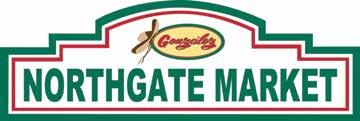













California Grocer on your mobile device, or share with an associate. cagrocers.com PRSRT STD US Postage Paid Permit No. 1401 Sacramento, CA
California Grocer Online Read



 PEPSI, PEPSI-COLA, the Pepsi Globe, and the Pepsi Pulse Design are trademarks of PepsiCo, Inc.
PEPSI, PEPSI-COLA, the Pepsi Globe, and the Pepsi Pulse Design are trademarks of PepsiCo, Inc.












































































































































































 By Christopher P. Norris, CFI, Director WZ EMEA & International Training, and Webinar Training
By Christopher P. Norris, CFI, Director WZ EMEA & International Training, and Webinar Training






















 NuCal Foods
NuCal Foods





















































































































